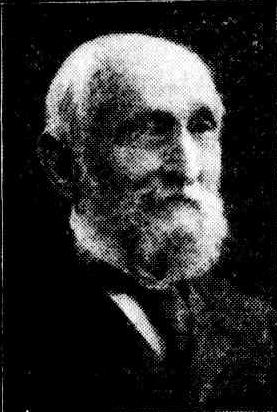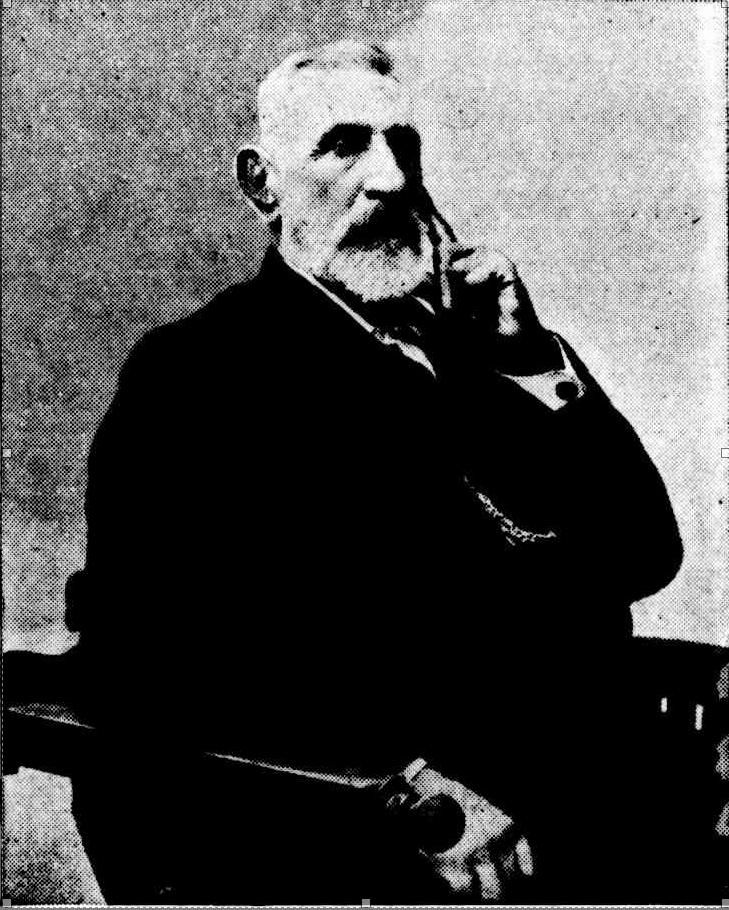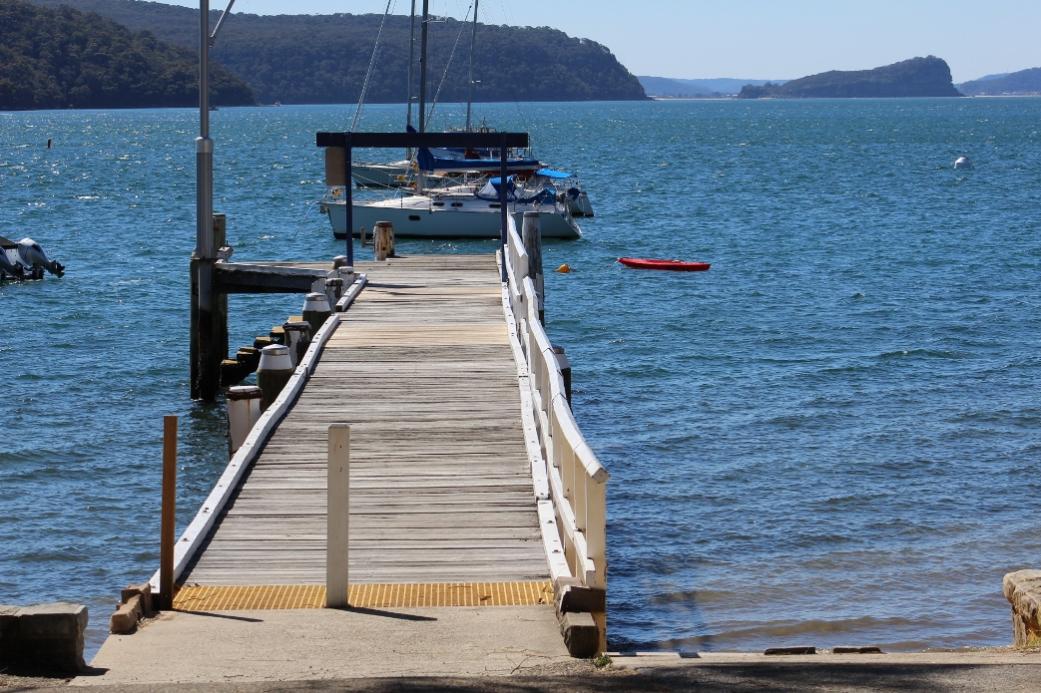PUBLICAN'S LICENSES.
List of Applicants for Licenses in the city and district of Sydney, under the Act of Council 2 Victoria, No. 18, for the year commencing 1st July, 1848 :—
1 Edward Robertson, Rose Inn, George-st.
2 William Howell, King's Arms, George-st.3 Matthias Hooper, King's Head, George-st.
4 Edward New, The Land We Live in, George-street.5 Robert White Moore, Fortune of War, George-street.
6 Isaac Moore, Patent Slip, George-street.
7 William Livingstone, Vine Inn, George-st.
8 James Smith, Rose of Australia, George-st.
9 William Sullivan, New York Hotel, George-street.
10 Nicholas Bray, Cornish Arms, George-st.
11 Robert Nairn, Liverpool Arms, George-st.
12 Israel Solomon, Crooked Billet, George-st.
13 Thomas Moore, City Wine Vaults, George-street.
14 Abraham Levy, The American Hotel, George-street.
15 George Clark, General Washington, George- street.
16 Charles Hargrave Salmon, St. John's Tavern, George and Bridge streets.
17 Thomas Martin, Castle Tavern, George and Bridge streets.
18 Michael Farrell, Farriers' Arms, George-street.
19 Archibald Menzies, Star Hotel, George-st.
20 William Edward Rider, Black Boy, George and King streets.
21 John Holman, White Horse Tavern, George-street.
22 John Sparke, Royal Hotel, George-st.
23 George Skinner, Skinner's Hotel, George and Hunter streets.
24 George Simpson, Crown and Anchor, George and Market streets.
25 Thomas Molloy, Bull's Head, George-st.
26 George Wilkie, London Tavern, George-st.
27 Edward Hancock, Swan with two Necks, George and Park streets.
28 William Aitkenhead, Emu Inn, George and Bathurst streets.
29 John Booth, Queen's Arms, George-st.
30 George Beringer, Bakers' Arms, George-st.
31 Harriet Whitehead, New York Hotel, George-street.
32 Charles Bath, Currency Lass, George-st.
33 Thomas Lee, St. John's Tavern, George- and Liverpool streets.
34 James Farmer, Crown, George-street.
35 Henry Harris, Jew's Harp, George-street.
36 Philip Whelan, Britannia, George and Goulburn streets.
37 Wm. Shipman, Shipman's Hotel, George and Goulburn streets.
38 James Stewart, Woolpack Inn, George-st.
39 Philip Brum, Peacock, George-street.
40 John Francis, Square and Compass, George-street.
41 John Bishington, Odd Fellows' Hall, George-street.
42 Patrick Meade, Corporation Inn, George and Sussex-streets.
43 Jeremiah Murphy, Steam-Engine Inn, George-street.
45 Richard Trowler, Black Swan, George-st.
46 Peter Hunslow, Dog and Duck, George-st.
47 David Taylor, Wheat Sheaf Inn, George-street.
48 Robert Hancock, Wellington Inn, George- street.
49 Edward Bones, Rising Sun, George-street.
50 John Sims, Currency Lass, Pitt and Hunter streets.
51 Henry Joseph Cohen.FitzRoy Hotel, Pitt-street
52 Martin Gill, Gill's Hotel, Pitt-street:.
63 Matthew Mullaney, Fortune of War, Pitt- street and Brougham-place
54 Mary Ann Hely, Brougham Tavern, Pitt- Street
65 J. W. Roche, Rainbow, Pitt -and King streets
67 Edward Samuel, Liverpool Arms, Pitt and King streets
68 Joseph Lcfaum, Elephant and Castle,- Pitt and King streets
59 John Solomon, Albion Inn, Pitt-street -
60 John Shannon, Star and Garter, Pitt-st.
61 Joseph Faris, Shakespeare Tavern Pitt-street
62 Daniel Rogers, William the Fourth, Pitt street
63 Joseph Wyatt, Victoria Hotel, Pitt-street and Market streets
66 Marr Green, Cricketers' Hotel, Pitt and Market streets
67 Joseph Smith, Mayor Inn, Pitt-street
68 Charles Turner, Nag's Head, Pitt .street
69 M. Cohen, Glasgow Hotel, Pitt-street .
70 Henry Doran, Edinbro' Castle, Pitt and Bathurst streets
71 John Jones, Cottage of Content, Pitt and Bathurst streets -
72 George Chambers,' Curriers' Arms, Pitt-at.
73 Louisa Watkins, Pulteny Hotel, Pitt and Liverpool streets
74 James Oatley, Sportsman, Pitt and. Gool
75 Thomas Smith, Red Lion, Pitt and Gool
76 James Cunningham, ' Commercial Hotel, Pitt and King atreets .
77 Edward Cattlin, Globe Tavern, Pitt and Market streets
78 Roger Murphy, Traveller's Rest, Pitt and Market streets
79 Edward Burton, Sydney Arms, Castlereagh-street
80 John Barnett, Barley Mow, Castlereagh and Park streets
81 William Tunks, Curriers' Arms, Castlereagh and Bathurst streets
82 Benjamin Lee, Settler Arms, Castlereagh-street
83 David Fernandez, New Zealand Inn, Castlereagh-street
84 George Scott, Printers' Arms; Castlereagh and Liverpool streets.
85. James Tallang-Leinster Lodge, Castlereagh-street
86 Catherine M'Elhart, Dungato House, Castlereagh street
87 Michael Cronin, Yorkshire [Stingo,; Castlereagh and Goulburn streets
88 Emanuel Crabb, Golden Fleece, Castlereagh-street
89 Alexander Elliott, Rum Puncheon, Castlereagh and Campbell Streets.
90 'William Cullen, Sk Maurice O'Oronall, Elizabethand Hunter streets
91 Richard Driver, Three Tuns, Elizabeth and Kingstreets.
92 Esther Roberts, Crown, Elizabeth and Goulburn streets.
93 Joseph Coqualin, Cheshire Cheese, Elizabeth-street.
94 Mountford Clarkson, Spread Eagle, Elizabeth and Park streets.
95 Emanuel Martin, Madeira Inn, Elizabeth street and Strawberry Hill
96 Elizabeth Wheeler, Strawberry Hill Inn, Elizabeth-street.
97 Charles Benham, Nelson Inn, Phillip and Hunter streets
98 Anthony Tuohy, Lemon Trw. Phillip-st
99 John Raynor, Star Inn; ThiUipa^Hun
100 James Turley Jones, Crown and Kettle,York-street and Barrack-lane
101 Robert E. Heaney, Hope Tavern, York street and Barrack-lane
102 James Entwhistle, Freemason Hotel, York-street
103 John O Dowd; Forbes Hotel, York and King streets .'
104 Elizabeth Miller, 'Garrick’s Head, York and King streets'
105 Thomas Murphy, Adelpi Hotel York-st.
106 James Chambers; Redfern Inn, York and Market streets
107 Richard Lowster, Harp and Shamrock, York and Market Streets
108 John Nobbs,' Gardeners' Arms. York-st.'
109 Sarah Kilpatrick, Harp of Erin, York street
110 John Frawley, Erin-go-bragh, York and Druitt streets
111. Thomas Byrnes, Queen’s Head, York and King Streets
112 Thomas Buck, ‘Lamb’ , Clarence-street and Margaret-place
113 Saul Solomón, Australian Hotel, Clarence-street and Margaret-place
114 Joseph Spinks, White Hart, Clarence and King Streets
115 Abraham Joseph Levy, Solomon’s Temple, Clarence and Erskine streets
116 Joseph Davis, Crispin Arms, Clarence- street
117 Patrick Erwin, Australian Inn, Clarence-street
118 Gregory Board, Blue Lion, Clarence and Market streets
119 Patrick Conlon, Tradesman's Arms, Clarence and Market streets . '
120 William Wells, Lord Nelson Hotel, Kentand Argyle streets '
121 William N. Palmer, Dumbarton Castle, Kent-street '
122 Andrew Goodwin, Lord Rodney Hotel,Kent-street
123 Richard Linch, Friend in Need, Kent-st.
124 William-Peny, Gas Hotel, Kent-street
125 Edward Berringham, Union Inn, Kent street
126 John Beattie,. Masonic Arms, Kent and Erskine streets
Í27 William Wolstoncroft, City Inn, Kent-st.
128 William Stevens, Wollongong Hotel, Kent and King streets'
120 Henry Roberts, St. Andrew's Tavern, Kent and-King streets
130 H. F. O'Donnell, Australian, Kent and Market streets
131 William Johnson, Yorkshireman's Arms, Kent and Druitt streets
132 John Curtis, Macquarie Inn, Kent and Bathurst streets
133 John Dillon, Leinster Hotel, King-street
134 William Caree, Hunter River Inn, Sussex -
135 Robert Thomas Carter, Ship Inn, Sussex- '
136 Edward Borton, Blue Bell Hotel, Sussex and Erskine streets
137 Robert Henderson, Dove Inn, Sussex and Erskine streets
138 Thomas Stewart, Royal Oak, Sussex and
140 Alexander Whittle, Lancashire Arms, Sussex-street and Union-lane
141 James Ezekiel Elliott, Saracen's Head Inn, Sussex and King streets
142 Thomas Blake,. Patent Slip, Sussex and King streets
143 Henry Linden, Woolpack, Sussex-street
144 James Yend, Commercial Hotel, Sussex
146 Samuel Jones, Governor Bourke, Sussex and Market streets
146 Samuel Barnett, Cheshire Cheese, Sussex and Market streets
147 Cornelius O'Neil, Darling Harbour Inn, Sussex-street and Market Wharf
148 George Coleson, George and Dragon,
150 Susan Legatt, Hope and Anchor, Sussex and Druitt streets
151 Alexander Gray, Light House Hotel, Sussex and Bathurst streots
162 Daniel Busland, Sir Walter Scott, Sussex and Bathurst streets
163 William West, Angel and Crown, Sussex and Liverpool streets
154 Michael Murphy, Builder's Arms, Sussex and Liverpool streets
155 Jane Coulson, Whitehaven Castle, Sussex and Goulburn streets
156 William Andrews, Ship and Mermaid,
158 Daniel Gallagher, Punch Bowl, Gloucester-street
159 Matthew Charlton, Glenmore Cottage, Cumberland-street
160 'Henry Jackson Motahm, Coach and Horses, Cumberland-street
161 Edward T. Macdonald, Forth and Clyde, Cumberland-street and Essex-lane
162 James Casey, Rock of Cashel, Cumberland street
163 David Cureton, Three Crowns, Cumberland street
164 John Williams, Petty’s Family Hotel, Church-hill
165 Edwin Warlow, Neptune Inn, Prince-st
166 William Cole, Bee Hive, Prince and Argyle streets
167 John Rochester, Erin-go-Bragh, Cambridge street
168 Robert Hardy," Custom House, Argyls
169 Matthew Brown, Rose and Crown, Argyle
170 William Ford, Napoleon Inn, Windmill
171 Clement'Sheri y Peat, St. Andrew's Tavern, Windmill and Clyde streets
172 Thomas Kirkman, Hero of Waterloo, Windmill and Fort streets
Í73 Jonathan Brown, Whalers’ Arms, Windmill and Fort streets
174 James Merriman, Whalers’ Arms, Miller's Point
176 John Pomroy Bond, Royal Oak, Miller's Point
176 Jane Gaze,. Custom House Hotel, Macquarie-place
177 Henry Barnett, Captain Cook, Bent and Spring streets
178 David M'Makin, Forth and Clyde, Bridge street
179 James Bent, Dolphin Hotel, Bridge-st.
180 Sarah Wallis, Hand and Heart, Liverpool and Dickson streets
181 Thomas Quigley, St. Patrick, Goulburn-street,
182 Catherine Walsh, Bee Hive, Campbell
183 Richard Loseby, Pack Horse, Campbell
184 Mary Blake, Shamrock Inn, Campbell-st.
185 Thomas Hilleon, Museum Hotel, William street, Woolloomooloo
Í86 Michael O'Keefe, Riley Arms, Woolloomooloo-road . "
187 John' Wilson,. Snr. Maurice O'Connell, Riley-street, Woolloomooloo
188 Thomas Baker, Woolloomooloo Inn, William-strcet, Woolloomooloo
189 Joseph 'B. Olifle, Cockatoo Inn, Bourke street, Surry Hills
190 Daniel Hickey, Curriers' Arms, Bourke street,. Surry Hills
191 John Robinson, Boundary Stone, Bourke street , Surry Hills . .
192 John'Barlow, Pine Apple, Surry Hills
193 Oliver Dwyer, .Hope and Anchor, Woolloomooloo
104 John AspiaaU, Terrace Inn, South Head Road - .
196 Patrick M<Donueil, Downshire Arms, South Head- Road.
196 Anthony Finn, Pelican, South Head Road
197 Robert Steele, Rising Sun: South Head Road
198 Thomas Hume Allison; Queen's Arms, South Head-Road
199 Thomas Taylor, Old ; Sportsman, Old South Head Road' .
200 Peter Ford, Sportsman, South Head Road
201 Stephen Newby, Robin Hood Inn, South Head Road
202 Lawrence Marshall, Victoria Inn, South Head Road
203 Timothv Duigon, Green Gate, South Head’s Road
204. Daniel Clarke, White Conduit House, South Head Road
205 Thomas Hopkins, Prince Albert, South Head Road
206. James-Barton, Odd Fellows' Arms, SouthHead Road.
207 Jemes Greenwood, Greenwood Tree, Paddington
208 Francis Baker, Paddington Hotel, Paddington '
209 Peter Brenann, Coopers- Arras, Pyrmont
2HPJohn Ooding,'Edinburgh Castle, Pyrmont
21T Tilomas Jones, Crown, Chippendale.
212 William Phillip, Chippendale Inn, Chippendale
213 'J]ohn MeilIon," Chippendale Hotel, Chippendale
214 .Michael WüBamson, .JhrpWdale
215 Stephen Swain, Hand and Line Redfern
216 George Spears/Rbdfern Inn, Redfern
'217 Wniüím Kúine;. Hand and Heart. Botany road
218,:William 'Beaumont, Sir' Joseph Banks Hotel, Botany. .... .
219 George Wullens; Foreseers' Arms. Glebe
220 John Scott, Glebe Tavern, Glebe
221 James Miller, Union Inn, Glebe
222 Charles James Bullivant, Waterford Arms, Balmain
223 Thomas Aiton, Unity Hall, Balmain
224 William Ternan, St. Patrick Inn, Balmain
225 Sarah Bell, Shipwrights Arms, Balmain
226 Honora Simes, Pilot Inn, feamatÉáina Harris street
227.-William p'Sul£vRO, .'Erih'a Ôiéèa fIalo, Parramatta street
228 John Marmon HimWy, Britannia, Parramatta and Kesington streets
229 Wilh'am SnV, Rob Roy M'Gregor, Parramatta-street
230 John Darcy, Red Bull, Parramatta-street
231 Edward Fittgibbons, Dog and Duck, Parramatta-street
232 Thomas McKenzie, Kangaroo Inn, Parramatta-street
233 Thomas Arundell, Wellington Inn, Parramatta-street
231 James Simpson, Golden Anchor, Parramatta-street
235 Maurice O'Flahcrty, Australian Inn, Parramatta-street
236 Robert Beatson, Victoria Inn, Parramatta
237 Henry Webb, Sportsman, Parramatta-st
238 John Henry Fidden, New Inn, Castlereagh street
239 Andrew Guy, Sportsman's Arms, Newtown Road .
240 John McGrath, Nelson Hotel, Newtown Road
241 Robert Bates, Saint John's Tavern, Newtown Road
242 William Walker, Union Inn, Newtown Road
243 James Richards, White Horse, Newtown Road
244 Charles Souter, White Heart Inn, Parramatta Road
246 James Davidson, Governor Bourke, Parramatta Road
246 John Harman, Timen, Parramatta Road
247 Samuel Weat, Red Lion Inn, Parramatta Road
248 Sarah Hughes, Woolpack Inn, Parramatta Road
249 Abraham Hearne, Bald Faced Stag, Parramatta Road
250 John Wright, Pack Hone, Parramatta Road
252 John Brown, Cheshire Cheese, Parramatta Road
253 George Barry Goodman, Circular Quay Hotel, Circular Quay
254 John Thomas Gannon, Union Inn, Cook's River
255 William Trimby, Bold Forester, Cook's River
256 James Murphy, Sugar Works, Canterbury
257 Thomas Kelsey, Canterbury Arms, Canterbury
258 James Pawsey, Harp, Canterbury -
259 William Smith, Cottage of Content, Liverpool Road
260 William Taverner, Bark Hut, Liverpool Road
261 Luke Holmes, Coach and Horses, Liverpool Road
262 Thomas Redgrave, Fig Tree- Cottage, North Shore
263 George Lavender, Macquarie Inn, North
264 Charles ' Shaw, Cornish Arms, North
265 John Whitford, Cornish " Arms," North Market streets
WINE AND BEER.
1 William Lynch, Lynch's Wine Tavern, South Head Road
2 William Ryan, Black Cow, Chippendale
3 John Barrett, Fifteen Balls, Chippendale
4 George Cole Turner, White Conduit House, Newtown
5 Charles McCawley, Antrim Arms, Newtown
6 Foster Anderson, Redfern
7 Evan Evans, Man of Kent, Cook's River
8 Johanna West, Seven Stars, Canterbury
9 John Commock, Green Gate, Lane Cove
CONFECTIONERS.
1 John Howell, George-street
2 John Glllick, York-street
3 Henry George Brown, York-street
4 Michael Wallace, Market-street
6 Thomas Mayhew, Hunter-street.
One of those whom Mr. Brown brought out, and who then went and set up on their own, was Joseph Ross - more on him below.
COLONIAL GLASS MANUFACTURE.
The opening of any new industrial enterprise in the colony, especially one for the production of goods that, like glassware, are so generally required for domestic, and on immense variety of other purposes, cannot but be viewed as a gratifying addition to our manufacturing capabilities. Whence came the original conception that such an undertaking could be profitably engaged in here may be matter of doubt, but three or four years ago, when the first practical effort was made, there had been proof that we possessed an inexhaustible supply of the chief ingredient of glass, and that too of an excellent quality. There was the striking fact of an English vessel free to carry any cargo which presented itself, transporting common sea sand a distance of 10,000 miles from Australia to England, in order that the glass-maker might have a fining siliceous material for his manufacture. Humble import as this was, it was shown to be so peculiarly well fitted for the production of the finest glass as to render it commercially advantageous to freight vessels with this substance alone. That this has not been carried out on a large scale may be attributed chiefly to certain objections to sand in its loose state as a cargo. However, having here close at hand such an abundant store of material rich in silica that constitutes the basis of all commercial [glass, having also lime, which enters into the production of some species of the article, having a plentiful supply of coals in variety, and seeing that at the same time there was a kind of legitimate protection to the new industry in the cost of importing like goods from so distant a part of the world as Europe, it would seem to any one who gave the matter a thought that success was attainable under favourable circumstances with regard to labour. This ground, however, afforded one of the first impediments in the way of the original projectors, and skilled men had to be collected by various means from different occupations in remote parts of Australia and New Zealand.
Premises convertible to the purpose of a glass-house were taken near the head of Darling Harbour, and brought into a condition suited to glass production. Without acquaintance with the particular state of circumstances that afterwards arose it would be useless to speculate upon the ground for the change that indicated something like failure, namely, a change in the proprietorship. Whether it had its - cause in difficulties connected" with labour or capital, or insufficient or unprofitable production, has not been inquired into. Whatever the unfavourable circumstances they appear to a great extent to have been got over by the present Sydney Glass Company, and there is every promise now that the work will developed into a large and important industry, having in view the extensive range from within which demands for the goods it supplies are likely to come.
Although most people are pretty familiar with the substances used and the process adopted in glassmaking, some particulars of the works in operation, may afford an idea of their extent and capabilities.
The works of the Sydney Glass Company, in Dixon-street, occupy an area of about a quarter of an acre, and on entering them the nature of the industry there pursued is at once apparent from the materials lying about. The sands are procured within no great distance of Sydney ; but they hive to be cleansed carefully, and then they are calcined. Bat there is another kind of material, also supplied in the locality, called "cullet," being the broken glass collected from the city by boys and girls, and purchased at the Works. It has to be washed, and the pressed or German glass separated from the English cut glass, as their constituents differ. Lime is used for green glass, and the best for this purpose is the stone lime procured from the Manning River. Various alkalies are also required-for instance, soda ash, carbonate of soda, and potash-as fluxes, and the oxide of lead is used in making what is called " flint glass," to which title, however, it seems to have no exclusive right.
In preparing the " fret," or mixed materials for melting, scrupulous care is required in giving the proper proportion of each ingredient, and even the strength of the alkali has to be tested before it can be safely used.
The different materials are put together in bins in what is called the mixing room. The broken glass brought in from the streets, after having been sorted, has to be again mixed up with sand, alkali, &c, according to its peculiar composition. The purpose of the saltpetre seen in the mixing room is to give the metal when in the pots greater adhesiveness, as it is sometimes in what is called too "buttery" a state to stick to the end of the blowing-pipe.
The sieving of the soda ash is a dangerous occupation, and the men when thus engaged have to prevent the dust coining in contact with their skin or getting in their throats. Before going into the melting department it is as well to look to the pots or crucibles the making of which is of sufficient importance to have two rooms devoted to the purpose. These pots which are dome shaped, and have an opening on the side near the top, have for general use capacity for about a ton of metal and weigh from 12 cwt. to 15 cwt. They are made of Newcastle fireclay and require not only great care in construction, but the lapse of a considerable time before they have passed the various stages that fit them for the fiery ordeal they will have to pass through. After lying in soak for a week, the clay which has been refined, is kneaded by a couple of boys with naked feet, again allowed to rest for fourteen days, when it is turned over and the process of kneading repeated. The bottom of the crucible having been formed, its sides are built up by gradual and careful application of small pieces of the clay. The thickness averages from three to four inches; and four pots will occupy about a month in making. They remain in the room which is kept at pretty nearly an even temperature for two or three months, until the moisture has gone from the clay, and they are then very hard. The great care exercised in making the pots is necessary in order that no foreign matter may enter with the clay, as a bit of stick or stone would be fatal to them when they get into the furnace. The pots being sufficiently dried ore conveyed on an iron carriage to the pot arch to be baked. This process takes ten or twelve days, the temperature being gradually raised and all air excluded until they become quite white with heat. This pot arch is not far from the furnace, the front of which is laid open to receive the pot. This is a critical time, as the heavy pot has to be moved whilst in this state of incandescence to its destination in the furnace, which also is brought up to a founding heat, when the pot is fixed the front of the furnace is_ built up again, the crucible receives a glazing of its inner surface, and all sediment from the glazing having been removed from the bottom, it is ready to be charged with a batch of " fret."
The furnace is a square brick structure, banded strongly with iron, and the cave beneath, 80 feet long, gives a powerful draught. A pot is inserted in each of the four sides on brickwork, and so enclosed as to leave only the orifice at the side open, all the rest of the pot having a current of flame around it. The materials for the glass are shovelled in to the pot through the side aperture, and when the proper quantity has been received, the hole is closely stopped with fire-clay The heat is got up to great intensity, and m about four hours the fusion and amalgamation of the materials take place, and liquid glass is formed Some difficulty has been experienced in procuring suitable coals as it was necessary that they should burn to a white heat and clinker on the bars, so as to preserve the heat when obtained The best Newcastle coal was not found to serve the purpose, but other kinds, from both the Newcastle and Illawarra mines have met the special requirements, and the average consumption is about twelve tons a week. The pots when emptied of metal are refilled, and will generally last about four months. Bad chemicals are most destructive to them, for instance, damaged oxide of lead will utterly destroy them the instant great heat is applied in the furnace. The breaking of a pot produces a great stir in the establishment. The teaser, whose sphere of duty is in the region below the furnace, will probably be the first to perceive it, by the leakage of metal through the bars. Then all hands are summoned and a hasty emptying of the pot takes place. Much can be saved in this way, as the contents may be worth £20.
The " glory hole " is a small separate furnace used m intermediate stages of tooled work after the various articles have been blown and moulded
When the articles have, by means of the iron blowing pipes and the after work of tooling and moulding, assumed the required shape and size, they have to be annealed to prevent their cracking or breaking under any sudden alteration of temperature-just as a good housewife boils glass vessels, and allows them to cool gradually before using them for hot liquids. The articles are taken from the workmen by boys, and, according to their quality, are placed in the lear-a long, low arched oven on one tide the building, or in the bottle arch on the other side, each of which is heated to a moderate temperature, and a gradual cooling then takes place According to the thickness of the glass the process takes a longer or shorter period.
There is a mould-maker employed on the establishment, provided with all the appliances for making articles of various patterns. According to the design the moulds are made in more or less separate pieces of iron, made to fit with great nicety, and with smoothly-finished inner surface. The moulds open and close by means of hinges, and some are used in a hand lever press, others worked by foot. The addition of this branch, which is recent, is expected to prove economical in saving considerable skilled labour by tool work in the chair.
The store-room, which stands apart from the works is well stocked, and the crates and shelves display the various description of goods produced. Among these there are in green glass – soda water bottles, carboys, jam jars, dispensing bottles and phials in sizes, old tom, bottles, and it is intended to make glass gingerbeer bottles, as it is estimated that they can be manufactured of glass as cheaply as of earthenware. In flint glass there are tumblers and goblets, confectioners show glasses, kerosene lamp chimneys, globes, flower aquariums, white spirit bottles, glass stands, test glasses, candle shades, gas chimneys, &c. The capabilities of the establishment are sufficient for the manufacture of every kind of goods except cut glass. The works employ about twenty hands on the premises.
The other manufactory is that of the Druitt-street Glass Company at the West end of Druitt-street, and also abutting upon Darling Harbour.They confine themselves to the production of flint glass. It would be superfluous to describe the processes of the work, as they are similar to in nearly all respects and on> almost the same -plan as those at the Sydney Glass works. Here the furnace is conical, and is adapted for holding four crucibles. Among the articles shewn . in the store-room are wines, champagnes, goblets, tumblers, nil kinds of lamp glasses, moulded medical bottles, confectionery show glasses in variety, fish globes, water-boules, jugs, &c. The consumption of coal is from seven to eight toes per week.
Flint glass requiring an intenser heat than other vitreous metal, it seems that in proportion to products the fuel would be greater in quantity.
Already the demand for the colonial-made goods is large and increasing, so that there is hope of this industry being permanently established. Only when this is successfully effected, can there be a prospect of extending operations to the more artistic kinds of work. Of glass cutters it is said there is only one in these colonies, and he is located at Melbourne. In some transactions between him and the Druitt-street Glass Company there was a curious exemplification of the effect of a protective tariff. To Victoria, where glass is not manufactured, a few lamp globes were sent to be cut, and though their value was only 17s., they had to pay 5s. duty. If this is the kind of protection the artisan gets there, our glass manufacturers would, it might reasonably be supposed, prefer the converse policy, Their ability to produce, without legislative aid, the articles they have up to the present attempted, at a price enabling them successfully to compete^ with imported goods of the same class, is an indication of the soundness of the enterprise, and its permanent success will be more thoroughly secured by self sustained vigour. COLONIAL GLASS MANUFACTURE. (
1868, March 27).
The Sydney Morning Herald (NSW : 1842 - 1954), p. 12. Retrieved from
http://nla.gov.au/nla.news-article13154050
The colonial made glassware attracted a considerable amount of curiosity on the part of visitors, many of whom could have had but little idea that such articles could be turned out in the colony. The Co-operative Glass Company, of Druitt-street, exhibited a fine collection of this wore, consisting of bottles, show glasses, tumblers, gas shades, &c, &c, in great variety. They also exhibited some very beautiful globes of very large dimensions. Mr. J. Ross, of Camperdown, exhibited a large assortment of glassware, consisting of tho most part of chemists' bottles; the collection also contained some well got up articles of other descriptions of glassware. ARTICLES OF COLONIAL MANUFACTURE. (1869, May 7). The Sydney Morning Herald (NSW : 1842 - 1954), p. 5. Retrieved from http://nla.gov.au/nla.news-article13184385
Ross's Glass Bottle Works,
AUSTRALIA'S PIONEER FACTORY.
(See illustration on this page.)
With this issue we present an illustration of the exterior of the well-known glass bottle works of Mr. Joseph Ross, in Australia-street, Camperdown. Few industries are more widely known than this one, controlled by Mr. Ross, who has been for 47 years in the glass manufacturing business, and who is the original manufacturer of glass from sand in Australia. The factory at Camperdown was started 30 years ago by the present genial proprietor, who for many years had a hard uphill fight; but his indomitable energy and pluck, and thorough knowledge of every branch of the trade, prevailed in the end, and at the present time the works are in a most flourishing condition. About 40 hands are employed, and all the most modern appliances and machinery for the perfect manufacture of bottle glass are used. The works, which have been appropriately named the " Perseverance Glass Bottle Works," cover a large area of ground, and though the number of hands employed is large, many more could be taken on were the demand for his products greater. There are three smelting furnaces, having tanks capable of holding 30, 16, and 4 tons of liquid glass respectively ; and nine annealing ovens. The amount of coal consumed is slightly more than 200 tons per month, and some idea of the intensity of the heat that is maintained in the main furnaces can be formed when it is stated that the temperature reached amounts to many thousands of degrees Fahrenheit. It may be mentioned that the stones at the bottom of the large glass tanks are of the best Pyrmont sandstone, while the sides and crown are of English fire bricks.
The furnaces are constructed on most approved principles, and by means of a very large tunnel excavated beneath the fire boxes, a wonderful draught is obtained. Mr. Ross makes bold the assertion, notwithstanding his large experience in England, Europe, and America, that in no other country in the glass-manufacturing world is the quality of the principal ingredients-the lime and sand-as high-class as in New South Wales ; he contends the Marulan lime used by him cannot be surpassed, if equalled, anywhere. Mr. Ross confines his business in the main to the manufacture of glass bottles, and among other kinds turns out aerated water, chemists' and druggists', condiment, pickle, sauce, wine, spirit, beer, and confectioners' bottles.
During the last two years he has gone in largely for manufacturing jam and fruit preserving jars and bottles, and now does a very large trade in that direction. Previous to this nearly all our fruit preserving jars and bottles came from America, but Mr. Ross's enterprise had the effect of reducing their cost since then by nearly 2s per dozen. These colonial-made fruit jars have taken the market fairly well, and have secured first prizes at many colonial shows.
Mr. Ross is now supplying some of the largest Sydney firms with fruit bottles and jars, and manufactures aerated water and other bottles for the principal Sydney firms. He also has many customers in inland towns, and exports largely to Tasmania, Queensland, and New Zealand. As further showing the extent of his business, Mr. Ross has over 500 moulds for the different shapes of bottles. Nearly every steamer brings an addition to this number, and besides a mould-maker is kept constantly employed at the works. His appliances also include 600 blowpipes, 36 of which are required for each set. On an average 250 gross of bottles are manufactured every week, but the furnaces and appliances are sufficient to turn out three times that number. A wholesale business is of course chiefly carried on, but small orders, even to the housewife's dozen jam bottles, are also executed. A visit to the glassworks of Mr. Ross is well worth making, the different processes employed in the manufacture of a bottle, a description of which would occupy too much space here, being highly interesting and instructive. Suffice it to say that Mr. Ross is carrying on a thriving business, the products of his factory equal any of those imported, his prices are just as low and in some cases lower than those charged for the foreign-made article ; so that his laudable enterprise and efforts to establish one of the most useful of colonial industries deserve the best encouragement of the community.
Ross's Perseverance Glass Bottle Works--Australia's Pioneer Factory.
(See letterpress on this page.)
DEATH OF MR. JOSEPH ROSS.
PIONEER GLASSBLOWER OF AUSTRALIA.
The death took place yesterday, at his residence, Bray-Street. Erskineville, of Mr. Joseph Ross, an old and well-known resident of Sydney. Mr. Ross was the pioneer of the glass industry In Australasia, having mixed and smelted the first pot of glass, and made the first lot of bottles on August 18, 1866, at Darling Harbour, on the site now- occupied by the Fresh Food and Ice Company.
In founding the glass trade Mr. Ross surmounted great difficulties. That he has left his mark is evinced by the fact that four of his sons are now engaged in this business. Mr. Ross's first apprentice is the managing-director of the Melbourne Bottle Works; another apprentice is works manager of the Sydney Glass-works, whilst a third is carrying on business on his own account. Mr. Ross took an active interest in municipal and political affairs, and was one of the founders of the Chamber of Manufactures, being on the first council, and several times a delegate at interstate conferences. He was also one of the promoters of the Protection and Political Reform League, and was always an ardent advocate for protection to Australian industry.
As an employer of labour, he was respected by all his men. A proof of this is the fact that four of his employees were 38, 37, 36, and 35 years respectively in his service, whilst many others have served from 16 to 30 years.
He leaves a widow and a family of five sons and two daughters, the latter being Mrs. Boag, of Newtown, and Mrs. Walker, of Marrickville Mr. Ross was born in Sunderland, England, in 1830, of Scottish parents.
ALDERMAN T. ROSS, MAYOR OF WATERLOO.
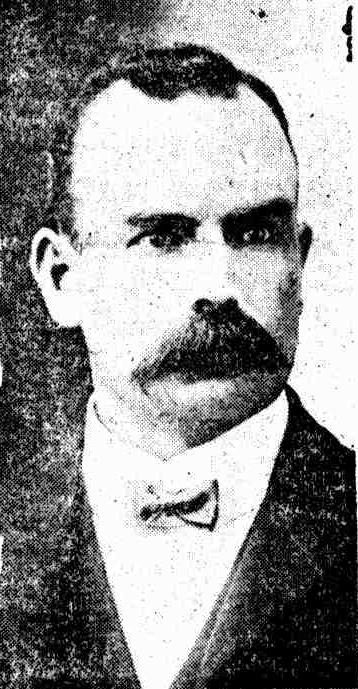
Though just beginning his first term of office. Alderman T. Ross, J.P., promises to be one of the -most successful mayors Waterloo has ever known.Born at Darling Harbour on August 18, 1866, he is one of the sons of Mr. Joseph Ross, the pioneer glass manufacturer of Australia. Alderman Ross is a member of the firm of Vance and Ross, the well-known glass bottle manufacturers of Botany-road, Alexandria. Great, however, as are the demands made upon him 'by his business, Alderman Ross has found time to take an active part In local and political 'affairs. He is a determined fighter, and was always easily retained his seat in the Waterloo Council. He is a member of the Redfern School Board, and, with the assistance of the Mayoress, takes a prominent part in every charitable movement. His Worship faces his new duties with confidence, and there is no such word as "failure" in his vocabulary. No title (
1908, March 29).
The Sunday Sun (Sydney, NSW : 1903 - 1910), p. 5. Retrieved from
http://nla.gov.au/nla.news-article227125057
AN OLD PIONEER.
DEATH OF MRS. ROSS.
Mrs. Christina Ross, widow of tho late Mr. Joseph Ross— the pioneer glass manufacturer of Australia— died early yesterday morning at her residence, Bray-street, Erskinoville. Deceased was born in Edinburgh, Scotland, in 1841. In the sixties she was of very valuable assistance to her husband in establishing the glass industry, and for many years she made all the clay pots or crucibles In which the raw materials for making glass was smelted. Mrs. Ross had a large family, of whom four sons and two daughters are alive, as well as about 30 grandchildren. Tho eldest son. Thomas Ross, Is n director of Vance and Ross, Ltd., glass bottle manufacturers, and he is an ex-Mayor of Waterloo, senior vice-president , of the South Sydney Hospital, and a member of the council of the Chamber of Manufactures.' Mr. Frank Ross is in business on his own account; whilst John and Alexander Ross are members of the firm of Ross Bros., glass bottle makers. The daughters, Mrs. Boag and Mrs. Walker, are. well-known residents of Newtown and Erskine-ville, Mrs. Ross was a very old member of the Methodist Church. The funeral will take place to-day in the Methodist portion of the Necropolis, Rook-wood. AN OLD PIONEER. (1914, June 15). The Daily Telegraph (Sydney, NSW : 1883 - 1923), p. 9. Retrieved from http://nla.gov.au/nla.news-article238811690
DEATH OF MR. THOMAS ROSS
Mr. Thomas Ross, who died last Sunday at his home, "Bottles," Burraneer Bay, Cronulla, aged 71 years, was the son of Mr. Joseph Ross, the pioneer bottle and glass manufacturer of Australia. Mr. Thomas Ross also went into the glass manufacturing business, and became a principal in the business ofMessrs. Vance and Ross which, in 1916, amalgamated with the Sydney Glass and Bottle Works, the Waterloo Glass and Bottle Works, the Melbourne Glass and Bottle Works, and the Adelaide Glass and Bottle Works, to form the Australian Glass Manufacturers Co., Ltd. Mr. Thomas Ross retired from business many years ago because of ill-health. He was a leading figure in the establishment of the South Sydney Hospital, and helped to introduce the Empire Day celebrations into the public schools of New South Wales. He is survived by Mrs. Ross and two sons, Messrs. Fred, and Tom Ross, both of whom are associated with the Crown Crystal Glass Co., Ltd. DEATH OF MR. THOMAS ROSS (1936, December 31).The Propeller (Hurstville, NSW : 1911 - 1954), p. 1. Retrieved from http://nla.gov.au/nla.news-article235635378
Joseph Ross (c.1836-1909) and Thomas Ross (1866-1936), glassmakers, were father and son. Joseph was born at Sunderland, Durham, England, son of Scottish-born parents. On 7 December 1859 in Edinburgh he married Christina Frazer (c.1841-1914), from Wick. They were to have four children born in Scotland and another ten in Australia. Joseph became a glassblower and about 1865 migrated with his family to Rockhampton, Queensland. In Sydney next year J. A. Brown employed him as a bottle maker. By 1871 Ross occupied his own premises in Australia Street, Camperdown, later named the Perseverance Glass Works. Here his workforce made bottles although, as he was a staunch Methodist and supporter of the temperance movement, apparently not for brewers, distillers and vintners.
In the early 1880s Ross subscribed to the Protection and Political Reform League and was an inaugural committee-member (1885) of the Chamber of Manufactures of New South Wales. Next year he helped to create the Protection Union of New South Wales. In 1887 he was a founding director of the Australian Newspaper Co. Ltd, which launched the protectionist newspaper the Australian Star, and a delegate to the first intercolonial conference of Chambers of Manufactures, in Adelaide. Next year he attended a subsequent conference in Melbourne.
Neighbours at times hauled Ross into court under the Smoke Nuisances Protection Act. In 1885 he had been brought before a parliamentary select committee, established by free traders to enquire into allegations that the protectionist Ninian Melville had corruptly helped Ross to sell land at Newtown to the Department of Railways at an inflated valuation. The committee found the charge 'not proven'.
Glassblowing was a family trade. Christina, at least early in the marriage, made the clay pots and crucibles within which the molten alloy was smelted. Four sons entered the business. When young, the daughters swept the works and shovelled coke into the furnaces; one married a glassblower. In 1894 Ross sold his factory to the Australian Drug Co., which tore it down to end competition with the company's North Botany (Mascot) bottle works. Ross agreed to stay out of business for ten years, but within three months his sons John and Alexander, as Ross Bros, had opened new kilns in Bray Street, Erskineville. Joseph and Christina moved next door to this factory and at times Christina was listed as its owner. Joseph's photograph showed a bold and mischievous face, with a fair curly beard and flourishing moustache. He died at home on 23 July 1909 and was buried in the Methodist section of Rookwood cemetery. His wife, five sons and two daughters survived him. Christina died on 14 June 1914.
Their fifth child Thomas had been born at Dixon Street on 18 August 1866, said to have been the night his father first fashioned a bottle in Sydney. Tom was business manager of the Perseverance works from an early age. On 23 January 1895 at St Paul's Church of England, Redfern, he married Ann Elizabeth Tye, née Mason, a widow. After 1894, instead of joining John and Alexander in Ross Bros, he managed glassworks at Alexandria, where he became associated with the Scottish-born master glassblower David Vance (c.1852-1931). Vance had arrived in Sydney about 1886 with his wife Catherine, née Hutton, whom he had married on 24 April 1885 at Glasgow. He worked for the Australian Drug Co. at its North Botany bottle works and then acquired two small glass-foundries at Waterloo. By 1904 he was in partnership with Thomas Ross. Their Alexandria Glass Works was known particularly for fruit preserving jars and whisky bottles.
A Freemason and a justice of the peace, Thomas had learned his politics in the tight little world of Camperdown and Newtown and followed his father as a committee member of the Chamber of Manufactures. In 1908-09 he was mayor of Waterloo. He was recruited by (Sir) James Joynton Smith as senior vice-president and government nominee on the board of South Sydney Hospital in 1909. His wife Elizabeth joined the board in January 1913. In 1910 Thomas failed to win Liberal pre-selection for the State seat of Botany.
Australian Glass Manufacturers Co. Ltd bought out Vance & Ross in 1915, paying the partners £24,000 in cash. As well, Vance received 9000 A.G.M. shares and Ross 7000. The Alexandria plant was demolished. Ross, in poor health for some years, retired to Burraneer Bay, Cronulla, naming his home Bottles. In the 1920s Vance moved to Glen Nevis, next door, where he died on 25 August 1931. An ardent promoter of Empire Day, Ross had celebrated the end of World War I by creating a large mosaic of three flags from coloured bottle glass set in concrete at his front gate, in honour of and relief at the survival of his sons Flight Lieutenant Frederick and Lance Corporal Thomas (who had won the Military Medal) and of a nephew. Thomas Ross senior died at his home on 27 December 1936, survived by his wife and their two sons.
Both sons worked for the A.G.M. subsidiary Crown Crystal Glass Pty Ltd, set up in 1926 to make cut glass, lighting ware and Pyrex. Young Tom became commercial manager. A stocky, hard-faced man, he presided over the works' cricket team, its golf days and its annual ball and represented the company in court against the trade unions. In 1955, however, the board tried to force his resignation, perhaps because of his ill health, and when he refused dismissed him. He died at his Bellevue Hill home on 18 February 1963. Legends he and his father had elaborated about their family as pioneer glassmakers, into which they had adopted Vance, were accepted by A.G.M. (later Australian Consolidated Industries Ltd) without question as part of its corporate history.
Barrie Dyster, 'Ross, Joseph (1836–1909)', Australian Dictionary of Biography, National Centre of Biography, Australian National University, http://adb.anu.edu.au/biography/ross-joseph-13178/text23855, published first in hardcopy 2005
THE AUSTRALASIAN GLASS COMPANY'S WORKS, RICHMOND.
THE demand for colonially manufactured glassware is so rapidly exceeding the supply as to require the starting another glass factory. The new establishment, which is in the hands of a Company styled the Australasian Glass Manufacturing Company, commenced active operations in the newly-erected premises in Type-street, Richmond, on Tuesday, 2nd April last. The works comprise a smelting furnace, containing three ten-cwt. crucibles and one six-cwt. crucible, four annealing kilns for cooling down the manufactured glass, one pot-arch for annealing the pots, and one " glory-hole " for finishing large ware. At present fifteen hands are in constant employ, and the turn-out is over ten tons weekly. The principal articles "manufactured at the works are wine glasses and kerosene lamp chimneys, but samples were exhibited of almost every kind of glassware, from a plain nobbler glass to an elegant flower epergne, a large fish globe, or an elaborate water caraffe, which had been manufactured on the previous evening, and had gone through the final process of annealing.
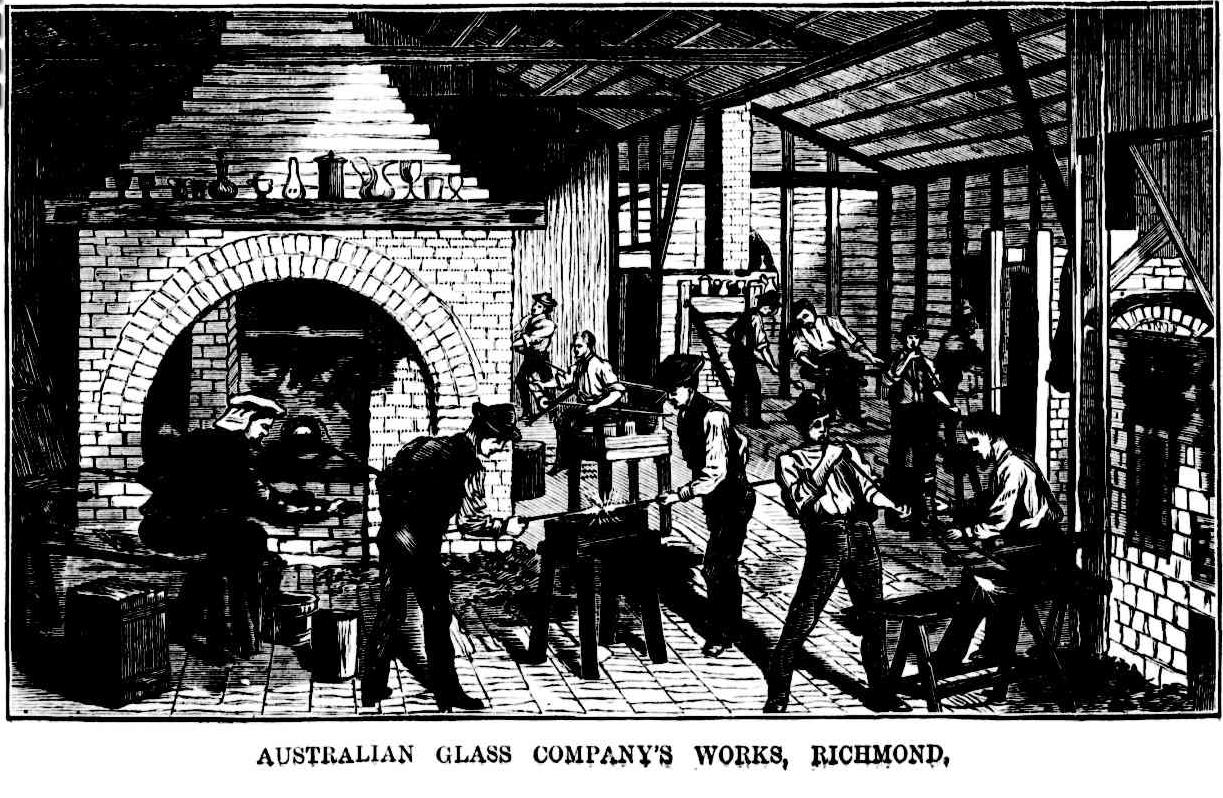
AUSTRALIAN GLASS COMPANY'S, WORKS, RICHMOND,
THE AUSTRALASIAN" GLASS COMPANY'S WORKS, RICHMOND. (
1878, August 10).
Illustrated Sydney News and New South Wales Agriculturalist and Grazier (NSW : 1872 - 1881), p. 5. Retrieved from
http://nla.gov.au/nla.news-article63335061
The above was a Victorian glass maker.
Australian Glass Bottle Company.
SYDNEY, Wednesday.-The above has been formed with a capital of £10,000, in £1 shares. Australian Glass Bottle Company. (
1884, July 10).
Newcastle Morning Herald and Miners' Advocate (NSW : 1876 - 1954) , p. 2. Retrieved from
http://nla.gov.au/nla.news-article135859215
A GLASS MANUFACTURER FINED.
At the Redfern Police Court yesterday, before Mr. Payten, S. M. , Walter J Taylor, of the Department of Labour and Industry, proceeded against Haigh Zlotkowski manager of the Australian Glass Manufacturing Company, on six charges of employing a male person under the age of 16 years in that part of his works at Alexandria in the process of melting and annealing glass was carried on. Defendant pleaded not guilty. Evidence was also given be several of the boys, all of whom stated that they were, on the day the inspector called, engaged at work between the furnace and the annealing ovens. Some were drawing bottles out of the oven, others were knocking bottles off the blow-pipe onto a plate. The defendant stated in evidence that all the firing was done at night. Every morning the furnace was blocked so that it would not go ahead and melt. On the day the inspector called there was no annealing of bottles. The defendant was convicted and fined £6 together with £2 4s costs, being 27s 4d in each case, in default, imprisonment for seven days. EMPLOYMENT OF BOYS. (
1903, May 27).
The Sydney Morning Herald (NSW : 1842 - 1954), p. 4. Retrieved from
http://nla.gov.au/nla.news-article14559082
THE WATERLOO GLASS BOTTLE WORKS LIMITED.
NOTICE is hereby given that at an Extraordinary General Meeting of the abovenamed Company held at the offices of Messieurs Frederick J. Smith and Johnson, 7 Moore-street, Sydney, in the State of New South Wales, on Wednesday, the first day of December, 1915, the following Special Resolutions were passed and at an Extraordinary General Meeting of the said Company. held at the offices of Messieurs Frederick J. Smith and Johnson, number 7 Moore Street. Sydney aforesaid, on Friday, the seventeenth day of December, 1915, the said resolutions were duly confirmed, namely:—
That this Company be wound up voluntarily, and that Wilfrid Edward Johnson, of 7 Moore-street, Sydney, be and he is hereby appointed liquidator for the purpose of such winding-up.
That the agreement expressed to be made between the liquidator of the Melbourne Glass Bottle Works Company Proprietary Limited of the first part, the said Melbourne Glass Bottle Works Company Proprietary Limited of the second part, the liquidator of this Company of the third part, and this Company of the fourth part, and Hatsell Chapman Gerrard, Trustee of a new Company to be named "Australian Glass Manufacturers' Company Limited" of the fifth part, be and the same is hereby approved, and the liquidator be and he is hereby directed to enter into the said agreement on behalf of this Company, and to carry the same into effect.
That the liquidator of this Company be and he is hereby authorised to sell if and when necessary so many of the shares forming part of the consideration mentioned in the said agreement rs may be necessary and to satisfy any dissentient shareholders of this Company, and to apply the proceeds of such sale for that purpose, and to distribute the remaining shares anions the members of this Company proportionately to their holdings therein.
Dated this twenty-second day of December, 1915.
MARK SHELDON.
GLASS MANUFACTURING WORKS AFFECTED.
SYDNEY, Tuesday.
The Australian Glass Manufacturing Co., Ltd., is closing down tonight on account of the shortage of coal; 850 men will be affected.
About Bottles
The New South Wales Bottle Company, Limited, carrying on business at Bulwarra-road, Ultimo, Sydney, has an advertisement in this issue of special Interest to hotelkeepers, cordial manufacturers, storekeepers, bottle merchants, bottle dealers and others. The firm states that their bottles remain the sole property of the firm, and that only the contents of such bottles are sold — not the bottles themselves. Various other conditions are set out which those concerned can read for themselves. Local and General News (1918, June 6). The Northern Champion (Taree, NSW : 1913 - 1954), p. 3. Retrieved from http://nla.gov.au/nla.news-article157092801
Bottle Collecting.
"Bottles" asks: (1) Is it necessary to have a license to gather bottles? (2) Must I get permission from a company to gather.their branded bottles?
(1) Yes, a second-hand dealer's licence. You should apply, in first instance to the local police. (2) Yes. Bottle Collecting. (
1928, April 20).
The Land(Sydney, NSW : 1911 - 1954), p. 14. Retrieved from
http://nla.gov.au/nla.news-article111645211
NEW GLASS BOTTLE WORKS.'
BOTANY'S INDUSTRIAL FUTURE.
-The works of the Southan Glass Bottle Company, Limited, situated at the corner of Morley and Dunning-Avenues, Rosebery, were opened yesterday by Mr. J. D. Fitzgerald (Minister for Justice), who performed the ceremony by breaking a long glass stick hung across the doorway.Refreshments wore partaken of In a marquee erected on the grounds. Mr. Fitzgerald stated that he was sure that everyone was glad to see the Inauguration of a new branch of an Industry. Besides giving employment in times when the problem was a serious one, it would, enable other important industries In other parts of "the State to carry on. It had come' to Ills , knowledge that through tho;. lock of facilities a great abundance of fruit in New South Wales could not be bottled. The Industry was one which was going to relieve that position by providing moans to preserve fruits which otherwise would .rot on tho ground or. trees. It would enable the people to enjoy the benefits of what was now a wasting product. He wished the project every success, and was specially elated at the successful bottle-making machine Invented by Mr. Southan; more so because It was the work of an Australian, (applause.) The history of the formation of the company was traced by Mr. F. H. Greaves (chairman of directors), who stated that In the erection of the works every consideration had been given to the comfort of the workmen. Mr. T. Mutch, M.L.A., referring to Botany's Industrial future, said that, besides being close to the city, the centre would ultimately have convenient access to the Botany railway, whlle the bay was one in which cargo vessels innumerable could be accommodated. He hoped that a good spirit of co-operatlon would possess the directors in relations to the men employed in their enterprise. (Applause.) NEW GLASS BOTTLE WORKS. (
1920, February 12).
The Daily Telegraph (Sydney, NSW : 1883 - 1923), p. 6. Retrieved from
http://nla.gov.au/nla.news-article239661557
Glass Manufacturing.
Although tariff alterations proposed by the Minister for Customs have not yet received the approval of Parliament, the Australian Glass Manufacturers Co Ltd announced that as a result of the duties to be imposed on sheet glass, the directors intend to manufacture the material in Sydney.The duties introduced by Mr. Pratten certainly are sufficiently high to tempt any organisation to seek to be the first in the field with an enterprise of the kind. The new venture is to be undertaken by a company subsidiary to the Australian Glass Manufacturers Ltd. That concern ranks as an exceedingly prosperous business. By absorbing the Zetland Glass Bottle Works Ltd in 1921 it largely obtained a monopoly of the bottle making trade of the Commonwealth. When registered in 1913, it amalgamated the Waterloo Glass Bottle Works Ltd and the Melbourne Glass Bottle Works Co Pty Ltd , and purchased the business of Vance and Boss Pty Ltd , glass bottle makers. Capital before the amalgamation with the Zetland Co stood at £442 489 in £1 shares, of which £100 489 represented payments in money and £278 000 otherwise. At the time of that merger, the company’s nominal capital was increased from £1,000 000 to £2 000 000 of which £175 000 was issued as 9 percent preference and £775 695 as ordinary capital. Before the amalgamation, the old companys profits had moved up from £27, 367 in 1917 (15 months) to £65,524 in 192. After the reorganisation and during the 14 months to March 31, 1923, £139,370 was earned as net profits and the next year they amounted to £147,207. It will not be far for the company to go from bottle making to sheet glass making. The prestige and financial strength of the company should mean that it will have no trouble in obtaining any funds needed for the new enterprise. MONETARY AND MINING. (
1925, September 15).
The Argus (Melbourne, Vic. : 1848 - 1957), p. 8. Retrieved from
http://nla.gov.au/nla.news-article2138028
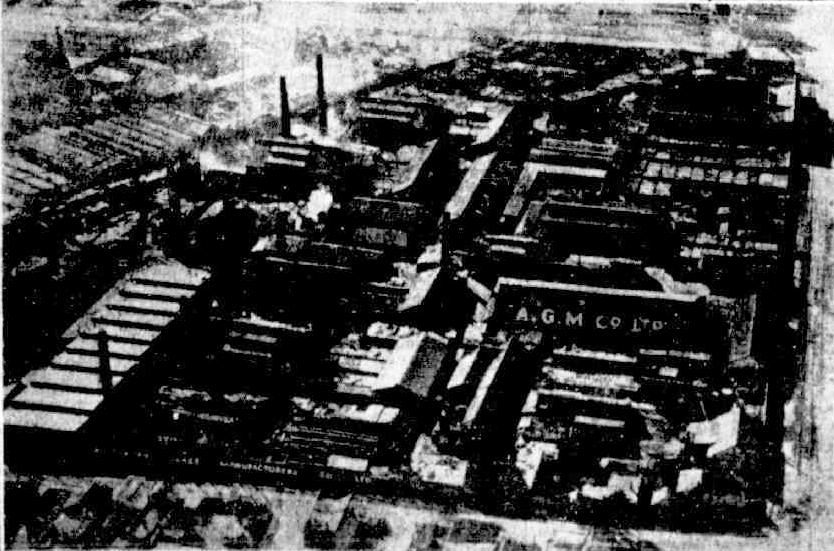
At Left— An aerial photograph of the Sydney factory of Australian Glass Manufacturers Co., Ltd., 1 934, in addition to which subsidiaries have been established, namely, Crown Crystal Glass Co., Ltd., Australian Window Glass Pty., 'Ltd., and Dott - & Co., Pty., Ltd., which, combined' with the parent Company, is able to supply almost the entire glass requirements of the Commonwealth.
Photograph of the Australian Glass Manufacturers Co. Ltd., Sydney Works, in 1915, on the site of the present plant.
GLASS FOR EVERY PURPOSE
A portion of the engineering section of the Sydney Works of Australian Glass Manufacturers Co., Ltd. Glass-smaking to-day is largely a matter of engineering skill and efficiency,coupled with modern plant.
—A Group of killed artisans employed in the engineering section of the Sydney Works of the Australian Glass Manufacturing Co., Ltd.
A Great Australian Industry That Can Be Yet Further Developed
THE Australian Glass Manufacturers Co, Ltd., and its Associated Companies Crown Crystal Glass Co. Ltd., Australian Window Glass Pty. Ltd, and Dott & Co. Pty Ltd. — manufacture a greater variety of glassware than any other Company in the world. The organisation has ten (to) production plants under its control — four glass factories in New South Wales; two in Victoria, and one in each of the other States and New Zealand. The factories cover an area of over 40 acres.
The total capital used in the industry exceeds £2,000,000. 4000 workers are directly employed, and indirect employment is provided for another 4000. With the exception of certain heavy chemicals; only produced overseas, all the raw materials are of Australian origin. The wages bill approaches £700,000 a year. Included in this great glass industry are various other subsidiary factories, including metal spinning, lamp making, metal stamping, plastic moulding, corrugated box making, refractory and crucible works. The plant and machinery in the various factories are maintained at a high -state of efficiency. Modern machines demand skilled mechanics with engineering qualifications. There are hundreds of such skilled mechanics engaged in the glass industry to-day. The glass blower, however, is still required. Extensions in the industry have created a demand for various types of workers, and engineers and glass, blowers are both absorbed.
The Australian Glass Co. is a national institution, and Australian glass, in a hundred forms, a daily necessity. We look through Australian glass windows, drink from Australian glass vessels, and we eat food packed and preserved in Australian glass containers. Australian Glass products stand the triple test, of Quality, Quantity, and Price-
QUALITY — Equal to the world's best.
QUANTITY— Sufficient for the Commonwealth.
PRICE— (Short, expression to convey the intelligence that prices are reduced because of Australian manufacture. Prices are lower than they would be if there were no Australian manufacture.)
HUGE FIRE DESTROYS GLASS WORKS AT WATERLOO
Damage estimated at £100,000 was caused by a lire, which destroyed a large section of the works of the Australian Glass Manufacturers Co., Ltd., at Waterloo, yesterday. The conflagration was watched by thousands of people, who saw flames 100 feet high roll out of the burning building, and blazing material hurled skyward by frequent explosions.
WINDOW GLASS
HEAVY DUTIES IMPOSED
No Local Manufacturer
Importers and distributors of hardware have complained of the detrimental effect on trade of the heavy Customs duties recently imposed by the Scullin Government on window glass. It is stated that the introduction of such exorbitant rates is unwarranted, and that the resultant increase in prices will either restrict the use of glass or increase the cost of building and bring about further unemployment. Although it was stated that the duties would not be imposed until August 1, to the surprise of those concerned they became operative on June 20- Heavy losses were incurred by traders who had sold glass on the basis of the former duty, shipments of which arrived from overseas after June 20, but before August 1.
There is no window glass manufacturing industry operating in Australia. The Government intended that the protection provided by the increased duties should serve to foster such an industry. A company engaged in the manufacture of bottles and table glassware had stated that it would establish a window glass works, but it is understood that, it does not intend to begin manufacturing until it is guaranteed sufficient orders to keep the factory going at its maximum output. Reasons given for the postponement of operations were the presence of heavy stocks.- of imported glass in Australia, and trade depression.
CONSUMER PENALISED
In the meantime, it is contended by merchants that the consumer is being penalised. : Importers who had paid the present high duties had to pass them on, and others who held stocks had also charged increased prices to their customers :because replacements would be subject to the higher duties. Formerly, it was stated, the duty "on window glass comprised a flat rate of 2/ a 100 ft. on British glass and 4/ a 100.' ft. under the general tariff. Present 'duties were British 1fid. a lb., or. 45 per cent., whichever was the higher, and foreign 2d. a lb., or 60 per cent., whichever was the higher, almost without exception the duty on weight would operate. Upon 16 oz. British glass the increase in duty was 525 per cent., and on 21-oz. glass it represented an increase of 750 per cent. On foreign glass the increases were 316 per cent. (16 oz.) and 450 per cent. (21 oz.). In addition to the duty on sheet glass a new sub-item, "figured rolled" glass, was embodied in the tariff. This glass was generally known as decorative cathedral glass, and was used chiefly for door panels, office screens, and similar work. The new duties on it represented 110 per cent. on the landed cost against the British product.
HIGH PROTECTION
Exclusive of primage duty, the tariff represented approximately 210 per cent. on the free-on-board value of 16 oz. Belgian glass and 164 per. cent. on. 21-oz. glass. With these charges it was contended that the protection to the Australian industry on Belgian 16-oz. glass vas about 330 per cent., and on 21 oz. glass 312 per cent. As no sheet glass has yet been made in Australia, and it is indefinite when manufacture will begin these heavy duties are deemed by importers to be unwarranted and makes importation practically prohibitive. It is believed that sufficient stocks of sheet glass are held by merchants in Australia to cover a long period, but it is stated that small purchasers will feel the hardships of the new duties more than the larger firms who hold stocks, and it will be difficult for the small men to handle the line. WINDOW GLASS (
1930, October 10).
News (Adelaide, SA : 1923 - 1954), p. 10 (HOME EDITION). Retrieved from
http://nla.gov.au/nla.news-article130218963
Mr. Scullin, See How Glass Monopoly Is Now Profiteering!
EMPLOYMENT UNDER NEW TARIFF IS POSTPONED WHILE COMBINE LOOTS PUBLIC WITH HIGHER PRICES
Manufacturers Played With £275,000 Last Year, But Will Not Go Ahead With Their New Workshops! WHO IS GATHERING PLUNDER IN THE GLASS TRICK?
IF you please, Mr. Fenton, Minister for Customs, direct your earnest attention to the practices of the Australian Glass Manufacturers Co., coupled with the name of Glass Distributors (N.S.W.) Ltd. Glass Distributors Ltd. have a perfect strangle-hold on the trade in N.S. Wales; and are already aiming to aria all other States . Every State is subject to the depredations of the Glass Combine. Tariff Duty on foreign Sheet Glass has been increased from 4/- per 100 square feet ' to TWOPENCE PER LB. Sheet glass varies in weight from 1lb to 2lbs per square foot. The old duty was ONE HALFPENNY per square foot. The new duty ranges from TWOPENCE per square foot for thin glass (lib to sq. ft.) to FOURPENCE per square foot for thick glass (2lbs tn an ft).
PROTECTED by those heavier duties (four times or eight times as much as before), the Australian Glass Manufacturers. Co. refuses to make sheet glass, .Until (in its own words) "abnormally large stocks of sheet, glass held In glass importers' warehouses throughout the Commonwealth have been sold off at increased prices." A new price list went out on July 22, 1930, from Glass Distributors (N.S.W.) Ltd. It raised the monopolist trade prices for sheet glass by increases .Which ranged from one penny to four-pence per square foot. …
name those who were taking a rake 'off ' under the Tariff. "Smith's" names for him the members of Glass Distributors (N.S.W.), Ltd., who are raking off the higher prices from their "abnormally large stocks held throughout the Commonwealth." No shareholder could complain of 'the profits distributed by Australian Glass Manufacturers' Ltd., in the balance-sheet of May 28, 1930. It was presented only two months ago, when the "prevailing depression" was everywhere proclaimed. Gross profit for 12 months ended ' March 31 was shown as £385,844/10/7; .and Net Profit as £187,163/15/10. j ; What became of the difference of £198,675/14/9 will be discussed later on. In addition to Net Profit of '- £187,168/15/10, the Australian Glass Manufacturers brought forward from "the previous year a balance of £87,864/10/6, giving them £275,033/6/4 to play with. And this is what they . did with it: — Preference Dividend, 0 P.O. on £175,000 .. . £15,750 0 0 Ordinary Dividend, 10 p.e. on £030,178 „ .. 03,017 18 0 Bonus, 21 p.e. on £030,178 23,261 10 0 Total, Dive. ...... ..£132,050 IB 0 To Reserve Funds ., « 50,000 0 0 To Staff Superannuation 2,500 0 0 Balance, Forward ...... 00,173 11 1 Total .............. ..£275,033 0 1
Not a bad year ! Of the whole capital (ordinary and preference) of £1,106,478, only £195,342 has been paid in money; the remaining £910,136 was contributed "otherwise than in money" — presumably, in the holdings taken by component firms or companies which formed Australian Glass Manufacturers Ltd. On that capital, of slightly more than £1,100,000, they cut up £132,000, of dividend and bonus, stowed away £50,000 into reserves, and carried £90,000 to help next year's dividends! But that is not all. Customs Minister Fenton and Prime Minister Scullin, when they examine the incidence of the Tariff, should ask Australian Glass Manufacturers Ltd.- — "What about profits of distribution?" In the Trade you cannot buy glass in New South Wales, whether imported or Australian-made, unless you pay through Glass Distributors (N.S.W.) Ltd. Prices and discounts are fixed by the Monopoly; and if any trader sells glass at less than the fixed price, he is fined by Glass Distributors Ltd. He ,may be boycotted. He may be ruined. When the Australian Glass Manufacturers Co., Ltd., made a year's gross profit of £385,844/10/7, they subtracted the following items— Salaries ; Travelling' Expenses. Rates; Office Charges. Taxation ; Depreciation. insurance:. DISTRIBUTING CHARGES. Etc. These are not itemised separately in the balance sheet but their total was £198,675/14/9. Distribution in N.S.W. is carried out by the Combine named Glass Distributors Ltd. Insurances are also effected by Glass Distributors Ltd.
Every home-buyer, every householder is affected by the exorbitant prices charged for glass, and the huge profits of the Glass Manufacturers as shown above. And the public is entitled to ask, concerning the sum of £198,675/14/9 subtracted from manufacturers' gross profits: — (1) How much of it, if any, represents trade profits of the Combine named Glass Distributors (N.S.W.) Ltd.? (2) How much of it, if any, is profit from the insurance business of Glass Distributors Ltd.? (3) What are the relations between Australian Glass Manufacturers Ltd., and Glass Distributors Ltd,?
Statements made by Australian Glass Manufacturers Ltd. will give a shock to those credulous Australians who trustfully believed that the higher Tariff would forthwith promote Australian manufacture, with consequent employment of Australian workmen. Its Acting Chairman, H. W. Grimwade (Melb.) told his shareholders on June 26, 1930: — "Progress has been made in Sydney with the erection of buildnigs for Australian Window Glass Pty., Ltd. "Owing to the abnormally large stocks of sheet glass held in glass importers' warehouses, coupled with the building trade lull, the start will bo delayed until Australian buyers are ready to take reasonable quantities." A monstrous rake-off from increased prices on "abnormally large stocks" is thus about to be made throughout Australia. All the trade suppliers in N.S.W. were commanded by Glass Distributors Ltd., as and from July 23, 1930 to raise prices as follows: — Sheet glass of 10oz, to be raised 1d per sq. foot. (Old rates were from 5d to 8d per foot, according to size.' of sheet. Sheet glass of 21oz, to be raised 2d per sq. foot. (Old rates, from 7d to 1/- per foot). Sheet glass of 26oz, to be raised- 3d
per sq foot. (Old rates, from-Od to 1/3). Sheet glass of 32oz, to be raised 4d per sq. foot. (Old rates, from lid to 1/0). Moreover, on all kinds of ornamental glass there are similar Increases, varying from a penny a foot to sixpence a foot. Between them the Australian Glass Manufacturers Ltd., and Glass Distributors (N.S.W.) 'Ltd., have accumulated stocks of glass worth hundreds of thousands' of pounds. They will dispose of it at greatly increased prices. Every glass-buyer will suffer. Not one Australian workman will benefit. The only benefit will accrue to those who profiteer in the "ABNORMALLY. LARGE STOCKS" they are holding. To show how the screw, is twisted, "Smith's" will cite an individual instance. One Glass Combine recently bought a big quantity of glass from the Receiver of a firm' which had taken the knock: — price, 5 id a foot. Listed trade price,, from the Combine, was then 8d. The price has now been raised to lid a foot. Another firm rang the Combine and asked for some of the glass: the reply given to him was, "Not for Sale." Perhaps even another rise In price is contemplated !It It is outrageous that Scullin's higher tariff on sheet glass should thus have played into the hands of distributing Combines. "Smith's" presents to the Prime Minister, and to Customs Minister Fenton, the following questions: —
1. — How much extra tariff protection was given to Australian Glass Manufacturers Ltd., to manufacture sheet glass? 2. — Did the A.G.M. give any guarantee that they would make sheet glass; and If so, when would It be made? 8. — Has the A.G.M. Co. as yet made any sheet glass? 4. — What sheet glass has the A.G.M. Co. in stock? What other stocky, Australian or imported? 5. — What sheet glass has Glass Distributors (N.S.W.) Ltd. In stock? And what other stocks? C. — Is the A.G.M. Co. a member of Glass Distributors (N.S.W.) Ltd.? 7. — Will the A.G.M. Co. supply sheet glass In New South Wales, otherwise than through Glass Distributors Ltd.? Or only at the Combine prices? - 8. — Will the Government appoint a committee for public inquiry into the Glass Monopoly which is exploiting the tariff with higher prices on "abnormally large stocks?" During the year ending March, 1930, as "Smith's" has shown above, Australian Glass Manufacturers Ltd. had available £275,033 of NET PROFIT, after providing for taxes, for depreciation, and for distribution. An enormous gift was made to the manufacturers by the new tariff. But no new manufacture has been begun. The only visible result, is an outbreak of profiteering with, the "abnormally large stocks" already held.
Nice Fat Profits
All Are Affected
Prices Are Raised
Prices Row: Union Seeks Reopening Of Works
MELBOURNE, Friday. — Australian Glassworkers Union applied to the Arbitration Court today for an order directing the Australian Glass Manufacturers Co., Pty., Ltd. to return its employees to its Spotswood works.
Mr. Gregory Gowans (for the union) alleged that the company was using its employees as pawns in a cunning political game. He contended that the company was endeavoring to bring pressure to bear on the Federal Government, the union and the Prices Commission to obtain an increase in prices, and had chosen as a means to that end "a most palpable lockout" of 500 of its employees at Spotswood (Vic.). Similar action, he said, was threatened with 600 at Waterloo (NSW).Mr. Mr. Stanley Lewis (for the company) said the 'suggestion that the union was being used as a pawn was ridiculous. The company had not been able to obtain supplies of black coal and it was economically unsound to carry on under present conditions. Judge Foster reserved his decision. P.M.'s Telegram Affidavits by James Denis Kenny, general secretary of the union, stated that about July 22 notices of dismissal were posted at the Spotswood works. On July 24 he was present at a conference with the Prime Minister (Mr. Chifley) and Mr. W. J Smith (general manager of the company), at which Smith agreed to withdraw the notices pending investigation for approval of increases in selling prices. On July 29 further notices were posted, and on August 2 Smith informed him that the company did not consider increases in prices adequate. A telegram, sent by the Prime Minister to Smith on August 5, produced in court, stated that, although decisions of the Prices Commissioner did not meet the company's request in full, they would involve substantial increase in revenue and ensure profit to the company. A telegram in reply was to the effect that an optimistic forecast would show the company more than' £150,000 down on the previous year's profits. Selling prices were based on the use of coal fuel, and production costs had soared amazingly through the use of fuel oil substitutes. "All we are asking," the telegram said, "is that we be permitted to adjust prices to cover the extra cost, thereby ensuring profits equal to last year." Prices Row: Union Seeks Reopening Of Works (
1946, August 9).
The Sun(Sydney, NSW : 1910 - 1954), p. 2 (LATE FINAL EXTRA). Retrieved from
http://nla.gov.au/nla.news-article231578706
Of course one of the greatest demands for bottles, after the 1860's 'soda water bottle' era, is those needed for bottling beer:
A GREAT BREWERY BUSINESS.
The Firm of Messrs. J. T. and J. Toohey. Aronnd aid AM the Browy. The Manufacture of a Glass of Toohey’s Sparkling Amber Ale,
In this country, where the demand for the imported article to the neglect of the local produot is noticeable in respect of almost every commodity, ' it is peculiarly significant to find that in some instances at least there is a rapidly increasing recognition of the worth and excellence of an article of consumption manufactured right in our very midst. We re-peat the fact is peculiarly significant, because it furnishes an interesting and instructive illustration of the triumph of right and reason over prejudice and fallacy. Not many years ago, before science and skill had worked their wondrous changes, "colonial beer," as it was contemptuously termed, was set down as the tipple of the thirsty plebeian, good enough, doubtless, to rinse out the dusty throat of the manual worker, but not at all tho beverage to provide refreshment to thirsty gentility. All that was in the early days of beer manufacture in Australia, But see how marvellous a change has been effected since the great firm of Messrs. John T. and James Toohey set themselves to revolutionise and reform the whole system of brewing in Australia, To this immense business organisation must be awarded the credit of having lifted colonial beer from obscurity, and by the-splendid advancement made in the preparation of the article placed . Toohey's amber ales amongst the foremost and finest specimens of the brewers' product known to a thirsty world. That-is the precise position occupied to-day by the beer which is turned out in inconceivably vast quantities from the firm's huge establishment in Elizabeth-street. At present the standard brewery ale and stout oan hold its own in quality and palatable excellence, with anything . the. world produces, and what is still mote encouraging the great beer-drinking public of this country come, slowly perhaps but surely, to the conviction that at least in this article of every-day use the importer has to face a rival that is steadily cutting into the demand for his goods. And when you come to look the thing over carefully this result is nothing but the inevitable outcome of the perseverance, skill and splendid enterprise which have characterised the growth and progress of the firm which is the subject of this article. Let us review as briefly as possible the remarkable progress of an establishment which is perhaps unique in connection with Australian manufactures. Twenty-nine years ago the brothers John and the late James Toohey came from their native colony, Victoria, to try their fortunes in New South Wales. With a moderate stock of capital and experience they entered the brewing business by the establishment of premises at Darling Harbour, where in a necessarily small way operations were carried on, and beer was produced for a few years. Even then the keen business instincts of the partners and that push and perseverance which have since been the great factors in the success of the present firm had their results in rapidly increasing business, and to meet the requirements of a growing demand Messrs. J. T. and J. Toohey took opportunity by the ear, as it were, and secured the site whereon the present imposing premises now stand. This was practically the birth of the Standard Brewery, and from that time the business of the firm grew and advanced with a rapidity truly remarkable. This, we need scarcely say, has not been accomplished without unfailing energy and the exercise of that keen business faculty for which the firm is known by all who have had negotiations with it. But for the chief cause of this extraordinary success we must look to the exceptionally high quality of the article which is to-day famous all the world over as Toohey's Sparkling Amber Ale. For the making of this wonderful beverage what immense resources are needed. It is absolutely impossible to conceive the extent and magnitude of this great brewery until half a day has been passed in the deeply in ieroaiing proosas of inspection. To most of us who induos tired nature to book up, as it were, by the absorption of COOLING STIMULANTS the preparation and ingredients of the liquor are matters of email moment, but when you have spent a few hours in the study of the process, and have dipped into the mysteries of the making, there will (if your particular tipple be as pure and whole-some as Toohey's Amber Ales) be an additional zest and relish in the drink. Pass, as we have, through the magnificent premises of the Standard Brewery, and your trip will, as ours did, end with the conviction of absolute purity and with a fooling of admiration for the splendid enterprise of the firm. Just now the old premises are slowly and steadily undergoing a process of disappearance by the erection of the new and handsome buildings on the corner of Terry and Foveaux streets. On every hand one sees evidence of progress and improvement. Through the swing doors, as you pass along the passage of the office, you will find 100 workmen busy in the construction of handsome and spacious floors for the laying down of beer in " work " and the holding of stock ready, for sending out.
By these additions the firm will be in a better position to meet the immense demand which for some time has sorely taxed the accommodation. Now, when a thirsty country calls aloud for amber ale, hundreds of casks and cases can be sent out through the Foveaux and Terry streets entrances to the drays drawn up outside. In this important respect the additions will be of immense aid and value to a firm which has hitherto found its only difficulty in the rapidly-increasing tax upon its manufacturing resources, Across the street we find that the vexed question of the storage of empties has been finally and satisfactorily settled by the establishment of a Spacious floor, the entire area of which is piled with hundreds of casks ready to be filled with the golden liquor that is being consumed throughout the colony. On the right is the cooperage, where numbers of workmen are busy, and hero the merry ring of the hammer is beard all day long. Below this is found the cleansing room, which is a perfect maze of machinery in itself. At first one is puzzled by the eccentric behaviour of a couple of casks that are rolling around in tanks like some lightly-loaded ship in a seaway. This is an ingenious contrivance of wheels and chain gear by which the barrels are kept constantly moving in the water, after which they are scalded and Subjected to an air-drying process.
Upon the occasion of a recent visit a good deal of amusement and satisfaction had been cansed in the bottling department by a series of tests, in which some visitors had been asked to select by smell, taste, and appearance a bottle of Standard Brewery stout from one of a leading English brand. In each instance the connoisseurs had selected the Messrs. Toohey’s as the imported variety and vice versa. Presently we were subjected to the game test, and without claiming anything like expert knowledge of the particular stimulant in question we flatter ourselves that we know stout when confronted with it. But in all seriousness we are bound to say that the sample submitted to as was the finest specimen of colonial production we have ever seen or tasted. For quality, flavour and body is was in our humble opinion far the superior of the imported liquor, with the added advantage that it was much lighter and' therefore bettor suited to climatic requirements, While each stout can be obtained at the price quoted by Messrs. J. T. and J. Toohey there should, and doubtless will be, an immense demand from a community that needs something palatable, sustaining, wholesome and moderate in figure. Then there is something interesting to learn about a new, and as yet experimental, process In the brewing of ale, but the gentleman who was our friend and quid a upon the occasion in question was not inclined to say much as to the modus operandi, but rather to invite our judgment upon a sample oi the new brew that winked and sparkled in a tumbler, from which the morning sun flung a thousand yellow gems of light. Pure and' clear as the mast perfect crystal, sparkling like the fines; champagne, and capped with creamy, snow-white froth, that glass of amber ale was a picture the alluring sweetucts of which would have melted away the scruples of the most uncompromising prohibitionist on the top of this thirsty planet. "There's not a headache or a moment's inconvenience in a cask of it," said someone with that confidence and conviction of a man who has been there and back. We confined ourselves to a glassful with the best and most comforting results, for we found the liquor, which, by the way, was drawn at random from a thousand bottles at hand, cool, sweet to the palate, refreshing and wholesomely stimulating, qualities which have made the Standard Alee more famous in this colony than Parkes, and have brought about the phenomenal success of this tremendous business. With that wisdom and. keen knowledge of business matters which have marked their long and eminently prosperous partnership the Messrs. Toohey saw that the surest and shortest road to success was by the production of the best article that energy, skill, enterprise and a liberal expenditure of money could give. And that, ie what yon find today when you enter those vast buildings that fairly hum with the varied notes of labour. Everywhere is evidence of scrupulous cleanliness and perfect completeness in the matter of appliance. From the great English cooling machine that works its powerful limbs in the refrigerating branch of the establishment to the delicate malt- weighing apparatus above; from the long tiers and etratchore of refining casks in the cool cellar to the great revolving mash-tub at the very top of the building, all is in the perfection of order, and as clean and sweet and pure as it is possible to conceive. These are a few of the reasons why to-day Toohey’s Amber Ale is the great national drink of this country, but that is precisely what it is. Penetrate to the farthest limits of habitation and settlement, and wherever there is a hotel the Sparkling Amber will lie procurable. In city and suburbs there is scarcely a hotel of any importance that does not provide a thirsty public with this famous brand, and in the private house Toohey's bottled ale and stout has become immensely popular for its light, palatable and wholesome qualities. Columns have been written in praise of this great beverage, and the poet has sung in rapturous accents of its power to revive languishing nature, but no man fully realises what perfect happiness is until tired out and- distressed with the' heat and toil of the day he drinks a glass of Toohey's Amber Ale, and with the soft gurgle of the bubbling liquor thanks the gods that so splendid a beverage has been given to suffering mankind.
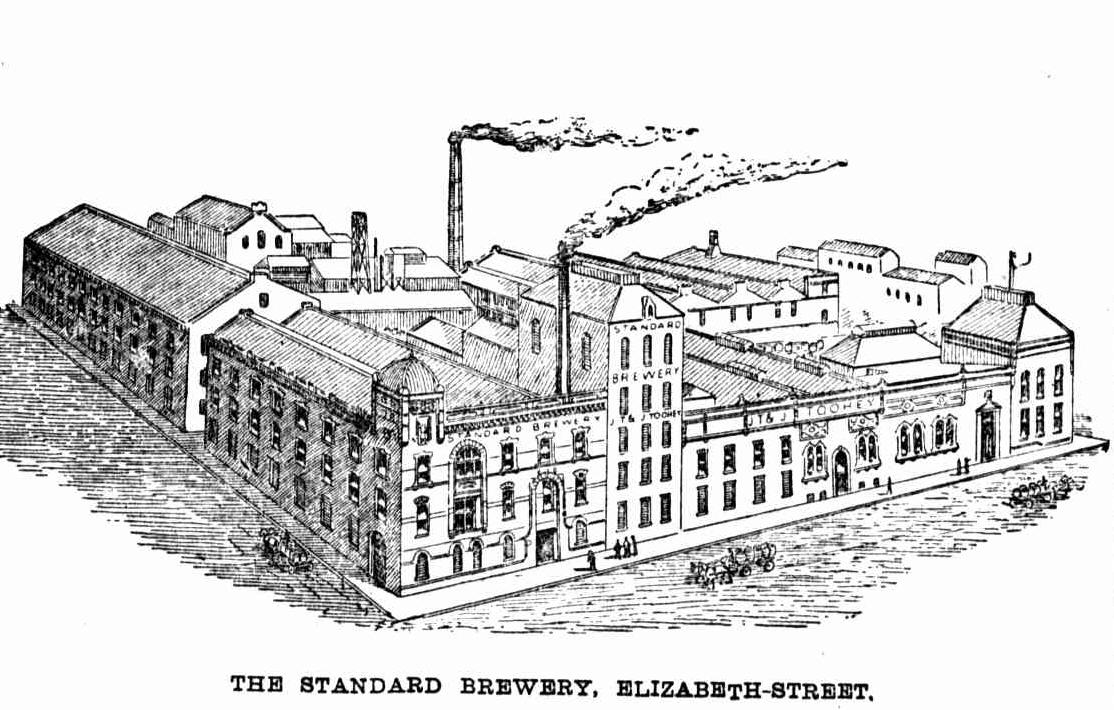
THE STANDARD BREWERY, ELIZABETH-STREET.
Ultimo Electric Power House.
(See illustration on this page.)
Recently large additions have been made to the tramway electric 'power house' at Ultimo, and also to the plant. Our illustration shows the buildings as they now are. The additional plant consists' of 16 Babcock and Wilcox boilers, of £ 250 horse power each, and three 1500 Kilowatt three-phase alternators, of the General Electric Company's manufacture, driven direct by vertical compound Allis engines. The whole of the buildings were erected by the Railway Commissioners' staff. One striking piece of engineering work is the travelling crane. A railway is constructed near the roof at a height of 50ft; along this a traveller Weighing 70 tons runs longitudinally, and laterelly a travelling crane, capable of hoisting 30 tons, moves. The span of the traveller is …ft. It may be stated that the new generators are (lie largest south of the line, that 200 tons of coal is consumed daily, and that the pumping equipment lifts 9,000,000 gallons of sea water from Darling Harbour daily-not much below half the quantity of water consumed in the metropolitan area every day.
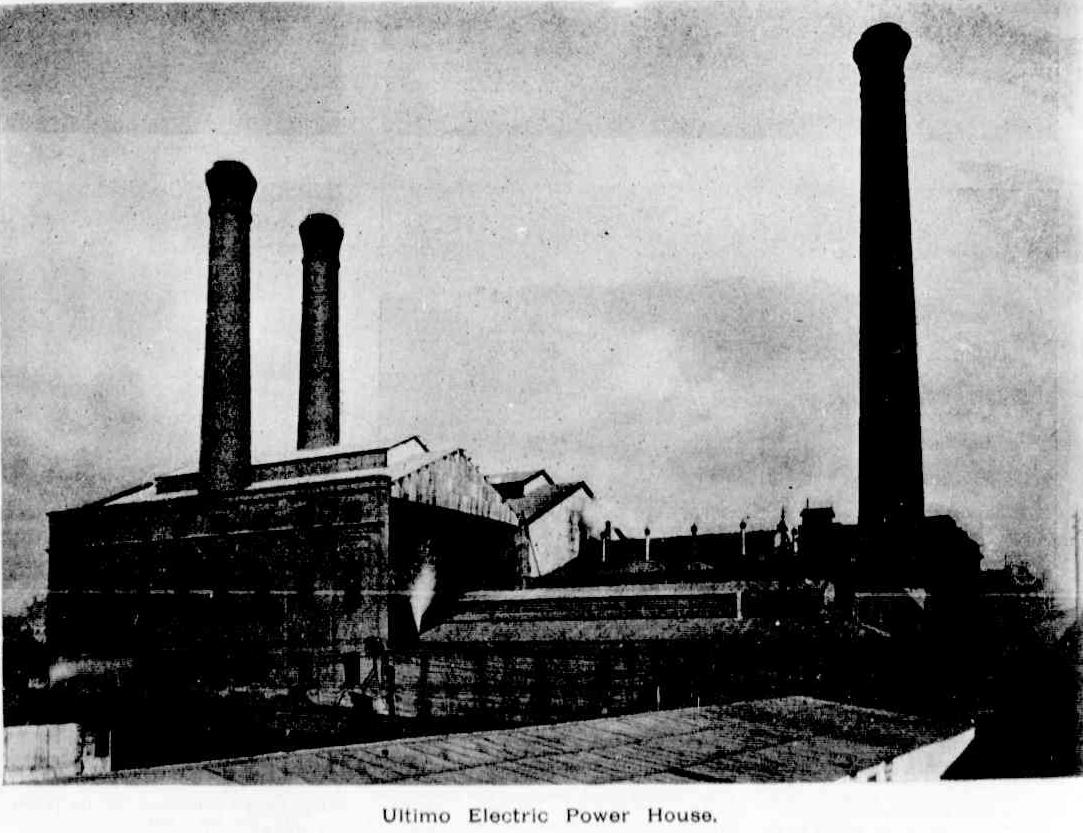
Ultimo Electric Power House.
A.N.A. EXHIBITION.
THE STANDARD BREWERY.
Throughout the length and breadth of Australia 'Tooheys' is a household word. In fact, 'Here's too 'ee,' the motto adopted by the firm, has become a part of the 'Australian language.' That motto, with the fine figure of the brewery smith luxuriating in his glass of ale, adorns the big brewery building at Belmore Park, which is one of the most conspicuous features of that part of the city, and figure and toast also appear in the trophy of the brewery at the Exhibition, which is illustrated on this page. This trophy consists of the Standard Ales in cask and bottle, decorated with sheafs of barley. The Standard brewery stands right opposite the new central railway station and Belmore Park, an admirable situation for convenience and working, and it is full of the latest notions in machinery and appliances for the brewing of ales, stouts, and beer, and for the making of cordials. Yet, big as it is, it grew from very small beginnings. It is the outcome of the enterprise of the brothers John T. Toohey and James M. Toohey, both deceased, who about the year 1869 commenced operations in premises at Darling Harbour. The growth of the business has been phenomenal, and the floating of the concern into a limited liability company in 1902, with a capital of £550,000, is only one of many indications of rapid progress which occur in the history of the undertaking. At the present time the company employs quite a little army of workers day and night, and can supply its patrons with anything they may require in the shape of beer, porter, cordials, and mineral waters, all made on the premises, or with colonial and imported wines, spirits, and cigars of all descriptions. The malthouse is capable of treating upon the most approved pneumatic principles from 90,000 to 100,000 bushels of barley during the year, and this in itself is a tolerably good hint to our farmers who care to take it, that if they grow and put on the market a suitable malting barley, there will be one buyer at least willing to pay the local price, and to save the heavy duty imposed upon imported barley. The output of beer which necessitated a duplication of the plant some nine years ago again threatens to strain the means of manufacture, but, needless to say, every preparation is being made to cope with any and every possible increase in the demand. The very latest plant for bottling beers in vacuum has recently been installed, and in all departments from the brewing tower to the refrigerating rooms, and throughout the acres of stores, cellars, and stables, there is a thorough up-to-dateness in all details which foretells that the secret of success is known by those controlling the destinies of the brewery, and loyally worked for by all concerned. It is another example of well-ordered industry, of the application of the most scientific idea to the most practical purpose, and of the concentration of effort and utilisation of commonsense to a common end.
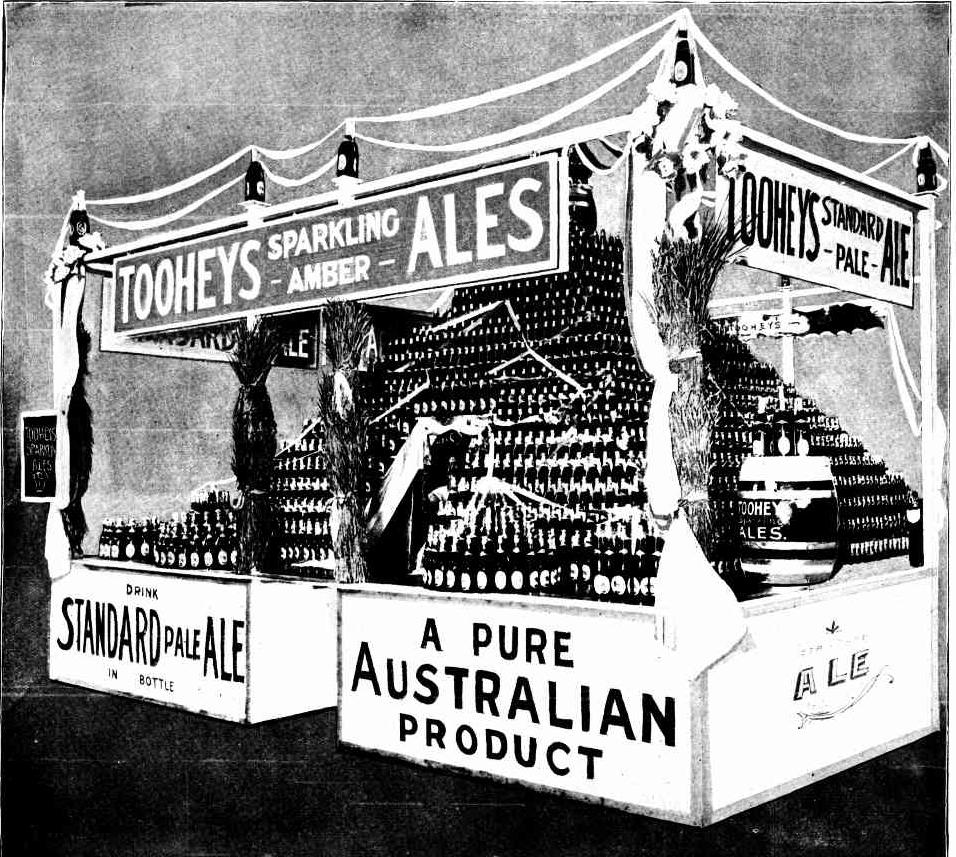
THE TOOHEY EXHIBIT.
Wherever one goes through the brewery, and the various establishments of which it is comprised, the impression of thoroughness, of cleanliness, and of honest work and honest methods obtains. The founders were men of sterling character, who won respect in the community in all their relations of life, and they have left their impress on this business, which is now under the chief direction of Mr. Martin, and with sons of the founders in prominent positions to carry on the family tradition. In a treatise on the New South Wales brewing industry, issued by the company in 1903, there are some interesting particulars as to the upgrowth of 'Tooheys.' From it we extract and underline the following information:—
'The great Standard brewery in Elizabeth-street covers upwards of five acres, and employs over 400 hands.
It is but 36 years since the Messrs. John T. and James Toohey left their native colony, Victoria, to try their fortunes in New South Wales. With a moderate stock of capital and experience, they entered the brewing business at Darling Harbour, in 1869, where, in a necessarily small way, operations were carried on, and beer was produced for a few years. To meet the requirements of a growing demand Messrs. Toohey secured the site whereon the imposing premises now stand, and which, strangely enough, was the site of the first brewery established in Australia long ago, when the nineteenth century was in its teens. Acquiring this site was practically the birth of the great brewery of to-day, and from that time the business of the firm grew and advanced with a rapidity truly remarkable. 'Not many years ago, before science and skill bad worked their wondrous changes, 'colonial beer,' as it was contemptuously termed, was set down as the beverage of the thirsty plebeian, good enough, doubtless to rinse out the dusty throat of the manual worker, but not at all the liquid to provide refreshment to thirsty gentility. All this was in the early days of beer manufacture in Australia. But how marvellous a change has been effected since John T. and James Toohey set themselves to produce a beer on modern and scientific lines, and placed Toohey's amber ales amongst the foremost and finest specimens of brewer's products known to a thirsty world. Passing out of the spacious and well-appointed offices, the Country Delivery Stage first comes into view. Here we see numberless casks of various sizes filled with sparkling amber ales, ready to send out to all parts of the State. Thence past the large hop stores, wherein are thousands of pounds' worth of the best and choicest growths of the world's hops, we arrive at the vat room, with its enormous tuns, each of them capable of containing 8000 gallons of fermenting beer, and all fitted with coils of silvery appearance for the purpose of regulating the temperature. We now are taken through the mill room where the malt is crushed by large steel rollers, and so proceed up steep stairways, passing on our way copper refrigerators of enormous power of cooling the boiling liquid, and so arrive at the 'Tower,' where are situated two immense copper boilers, whose boiling capacity is nearly 10,000 gallons each. Up yet another stage and we find ourselves in the mash tun room with its two mash tuns, gristcases, and hot liquor backs, and a perfectly bewildering mass of machinery and network of burnished pipes. On descending to lower floors by a different route, we pass through the two capacious malt store rooms; and, still descending, we come to the Town Delivery Stage, which is of twice the dimensions of the Country Stage already described. From here we are conducted to the cellars. Row upon row of butts in apparently endless succession meet the view. Next we cross the well-kept road of the bottling department, of four stories. From here to the principal engine room, where two Hercules ice machines are placed to supply the needs of the brewery during the hot summer months. These machines are capable of turning out 50 tons of ice per day. On past the boiler house with its four double-furnaced Babcock and Wilcox boilers, and so to the recently erected malt house. Here is the latest and most scientific plant for the manufacture of barley into malt. Pneumatic drums, in which the steeped barley grows into malt, kilns with self-turning apparatus, malt bins which fill and empty themselves without the grain being handled by human aid, are all passed in review. Then come the spacious wine and spirit cellars, from whence Tooheys, Ltd., supply their customers with the best brands of imported ales, stout, and spirits. Messrs. Tooheys, Ltd., also make a specialty of the famous Balgowrie whisky, for which they are sole agents. They also carry on an aerated water manufactory, which is a great business in itself. All classes of aerated waters are made, including Federal Spa and Homa.' That was written in 1903, and in general terms it is equally applicable to-day, but what was up to date in 1903 is so rapid has been the advance of the brewery and of brewing service, often regarded by the management as being behind the times of 1906, and so in every department are to be seen still newer 'notions.' Still, more or later machinery. And so it goes on, the world being drawn upon for its ideas and brains, and capital lavished in keeping abreast of them.
ILLUSTRATIONS.
Death of Mr. J. V. Toohey.
Great surprise and regret were expressed in commercial and sporting circles on Sept. 27 when it became known that Mr. James Matthew Toohey, the junior partner in the well-known brewing firm of J. and J. Toohey, had suddenly passed away. A few months ago Mr. Toohey took a trip to England for the benefit of his health, and a complimentary send-off, attended by many of the prominent residents of the city, was given to him, when, therefore, it became known that he had expired on the eve his return to his native land, expressions of regret were general. The news of his death was received by cable on Sept. 27. The Hon. John Toohey, brother of the deceased, had a few days previously received a message to the effect that his brother was seriously ill, and had decided to return by the E.M.S. Ophir. It was not anticipated, how-' ever, that the condition of the deceased gentleman afforded occasion for alarm, and consequently Mr. John Toohey was astonished at the reception of the news of his brother's death. During the day Mr. Toohey received a large number of messages of sympathy and condolence, prominent among them being one from Mr. Michael Davitt, M.P., who is at present in Melbourne. The messages came from all parts of this colony, and also from, Victoria, where the deceased was well known. Mr. James Toohey left Sydney for London in April last by the Ophir, accompanied by Miss Toohey and four members of his family. While in London he gave an entertainment in celebration of the twenty-first birthday of his eldest son, amongst those present being Sir Thomas Esmond and other members of the Irish Parliamentary party, and a large number of representative Australians. The deceased gentleman, who was the second son of Mr. Matthew Toohey, was born in Collingwood, Melbourne, about 1848, and consequently at the time of his death was about 47 years of age. After undergoing an educational course at St. Patrick's College, he, in company with his brother, proceeded to this colony in the year 1866. Some time after their arrival the brothers established a brewery at Darling Harbour, but they subsequently removed to the position now occupied by the well-known Standard Brewery. Both gentlemen interested themselves in various sports and pastimes, and Mr. James Toohey took an active part in many kinds of recreation.
While a young man he distinguished himself at cricket, and secured a batting trophy as a member of the East Sydney Club. In recent years the deceased took an active interest in the historical pastime of bowls. For about eight years he was a promineut member of the Union Recreation Bowling Club at Strathfield, where be resided, and also belonged to the City and Newtown club. Such was his proficiency at the game that on many occasions Mr. Toohey acted as rink captain in the various teams sent to represent this colony against Victoria. Mr. Toohey was also well-versed in theatrical matters, and possessed a thorough acquaintance with the works of Shakespeare. His public impersonation of Richelieu was generally regarded as being excellent. In commerce and politics Mr. Toohey was generally known and respected, and his unostentatious charity secured him a wide measure of esteem. His liberality in regard to the support and extension of the work of the Roman Catholic Church has repeatedly received the encomiums of the heads of the denomination. As a politician, Mr Toohey sat for over 10 years in the Legislative Assembly being one of the representatives for South Sydney in five Parliaments. He entered the House m 1882, and was re-elected at the general elections of 1885, 1887, 1889, and 1891. Of the protectionist policy he was a strong and uncompromising supporter ; and though he retired from Parliament in 1893, he offered himself for Tamworth in opposition to Sir George Dibbs, on which occasion he was defeated. A well-known gentleman writes of Mr. Toohey in the following terms :— ' A stanch friend, but a fierce opponent. It was always better to have him on your side than against you. He was an ardent sport, and was always foremost in beading a subscription in recognition of prowess. He always associated himself with cricket, football, hunting, bowls, and all other sports. In Victoria, when a young man, he was credited with being an excellent all-round athlete, and especially good as a footballer. He- was a prominent member of the old Alberts in Sydney. He was also an excellent amateur actor, and it will be remembered played the title role in Bnlwer Lytton's ' Richelieu,' both in Parramatta and Sydney. In his young days he had serious thoughts of adopting the stage as a profession, but his father was strongly against this step, and threatened that if be ever appeared on the stage
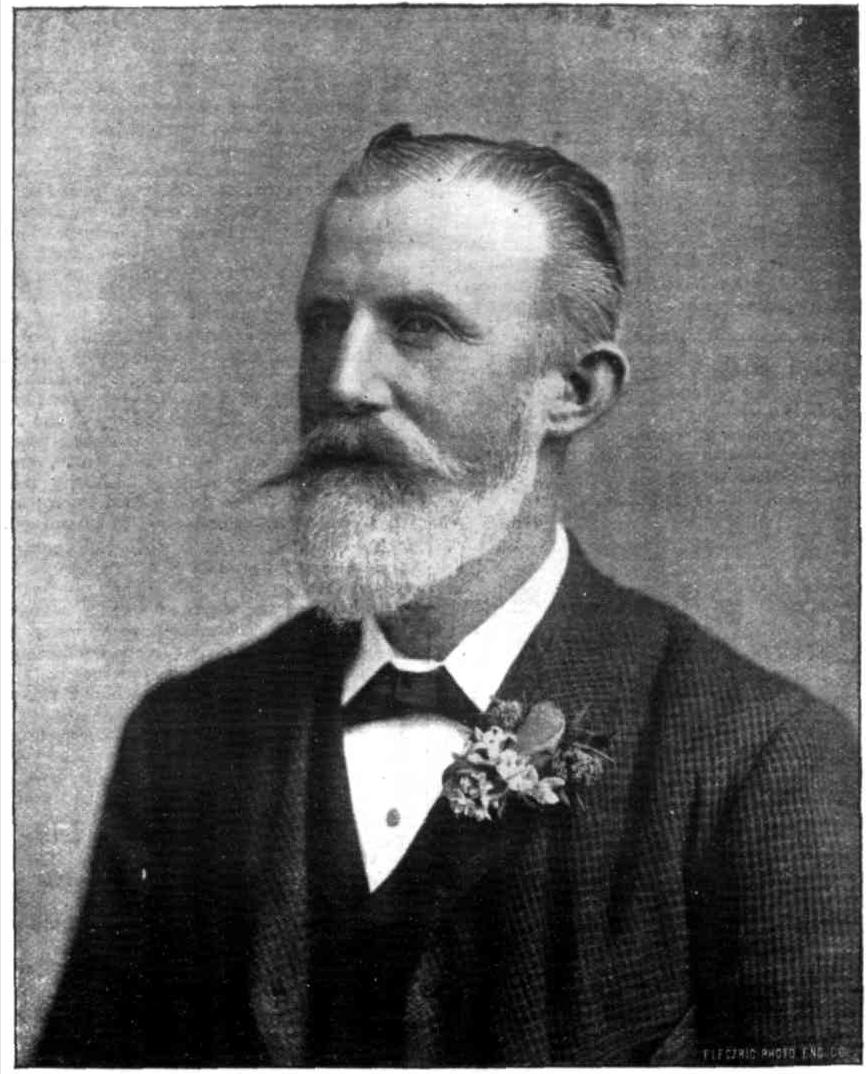
THE LATE MR. J. M. TOOHEY.
as a professional he would shoot him. This, however, did not de'er him from playing aa an amateur. He was a member of the Garrick and the A.B.C. Dramatic Clubs in Melbourne, and was looked upon as T. P. Hill's most prominent pupil. He played several times with Barry Sullivan in Melbourne, and at the hands of that actor received a marginal-note volume of Shakespeare.' Mr. Toohey was a prominent member of the Sydney Hunt Club. He leaves a family of eight — four sons and four daughters. The four eldest members of the family, together with Mrs. Toohey, are at present in England. At a meeting of the executive of the National Protection Union on the 27th ultimo, Mr. W. J. Lyne, M.L.A., made feeling reference to the decease of Mr. James Toohey, and on the motion of Mr. John Perry, M.L.A., seconded by Mr.
E. W. O'Sullivan, M.L.A., the following resolution of condolence was unanimously carried : — ' The committee learn with feelings of profound regret of the decease of Mr. J. M. Toohey, and wish to place on record its high appreciation of his sterling personal and political worth of the great services he rendered to the cause of protection, both in and out of Parliament ; and of the multiplied and unostentatious acts of public and private benevolence performed by him during many years ; and further wishes to express deep and sincere sympathy with Mm. J. M. Toohey, his widow, and with the Hon. John Toohey. his surviving brother, in their sad bereavement.'
PERSONAL.
DEATH OF MR. ,T. M. TOOHEY.
Shortly before noon yesterday a cable message, forwarded from one of the suburbs of London, was received in Sydney announcing the death, of Mr. James Matthew Toohey, who, it will be remembered, left Sydney a few months ago on what was arranged as an extended tour in search of health and recreation. Only a few days ago, however, the brother of the deceased gentleman, Mr. John Toohey, M.L.C., was Informed by cable that his brother was seriously ill, and would return by the R.M.S. Ophir, leaving on the 4th inst. A cable, asking for confirmatory and fuller intelligence, has been forwarded to the old country. Mr. J. M. Toohey was accompanied on his holiday by Mrs. Toohey and their four eldest children, four other children remaining at the deceased gentleman's residence at Strathfield. The late Mr. J. M. Toohey, who was 40 years of age, was the second son of Mr. Matthew Toohey, and was a native of Victoria, his birthplace being a suburb of Melbourne then known as Emerald-hill. Educated at St. Patrick's College, in 1866 he came with his brother, Mr. John Toohey, to this colony, the brothers eventually entering, into business as brewers at Darling Harbor, ultimately transferring operations to the present site of the Standard Brewery, then known as Terry Hughes's paddock. For over 10 years the deceased gentleman was an active member of the Legislative Assembly, and for five Parliaments occupied a seat as one of the representatives of South Sydney. He entered the Assembly In 1882, and the electors of South Sydney renewed their confidence in their representative by returning him at the elections of 1885, 1887, 18S9, and 1891. His views were strongly protectionist; and he fought for the cause with unabated vigor and unwavering consistency. Mr. Toohey's decease will be mourned in very many circles. In almost every form of wholesome sport ho was a well-known figure. As a bowler Mr. Toohey was a skilful player. He was prominent among the members of the Sydney Bowling Club, and only a short time ago captained a team which visited Victoria. He also made his mark in the cricket field, and was actively interested In the Sydney Hunt Club, the Sydney Gun Club, and many other organisations for the furtherance and enjoyment of outdoor amusement and beneficial exercise. In private life Mr. Toohey earned the admiration and esteem of all who knew him; and his charity was far-reaching and lavish. PERSONAL. (
1895, September 28).
The Daily Telegraph (Sydney, NSW : 1883 - 1923), p. 5. Retrieved from
http://nla.gov.au/nla.news-article238537291
The late Hon. John Toohey.
A cablegram was received by the general manager of Toohey's, Limited (the Standard Brewery), last week, announcing the death of the Hon. John Thomas Toohey, M.L.C., chairman of directors of the company, which took place at Chicago an the 5th instant. The deceased gentleman was a well-known figure in commercial, political, and philanthropic circles in this State, and the news of his demise will be read with regret. Born at Limerick, Ireland, in 1837, John Thomas Toohey was brought to Australia by his parents when 12 months old. He received a sound education, and with his mental training imbibed 'keen affection for the land of his birth and that of his adoption. He developed a resoluteness of character which stood him in good stead during the business efforts of his early manhood. His self-reliance and will power enabled him to succeed after some unsuccessful business ventures. In Victoria, New Zealand, and Queensland his efforts to achieve success were unfortunate, but in 1870, in this State, he, in company with hi? brother, the late J. M. Toohey, founded the Standard Brewery at Darling Harbour, Sydney. When the brewery was removed to its present locality in Elizabeth-street, Mr. Toohey put all his energies into it, and prosperity followed rapidly. Both he and his brother became men of prominence, and as they took a profound interest in matters of State pi ogress in various directions, they became men in whom the community placed trust. Mr. Toohey sought the suffrages of the Monaro constituency at one time, but was unsuccessful in his Parliamentary aspirations. He was, however, in 1892 appointed to the Legislative Council. He was a leading member of the Roman Catholic Church, and by his death several of the religious and philanthropic organisations of that Church have lost a devoted friend, whose purse and counsel were always at call. He was for some years a resident of Burwood, but of late years he had resided at Innisfail, Wahroonga. He assisted materially in the development of both Burwood and Wahroonga, and was one of the benefactors of the Little Sisters of the Poor at Randwick, the Lewisham Nursing Sisters' Hospital, the Westmead Orphanage, and the Waitara Foundling Hospital. He was married twice, and his second wife, son. and three daughters were with him during his tour round the world. Dr. C. W. M'Carthy was his medical adviser, and it was owing to that gentleman's advice that he sought health abroad.
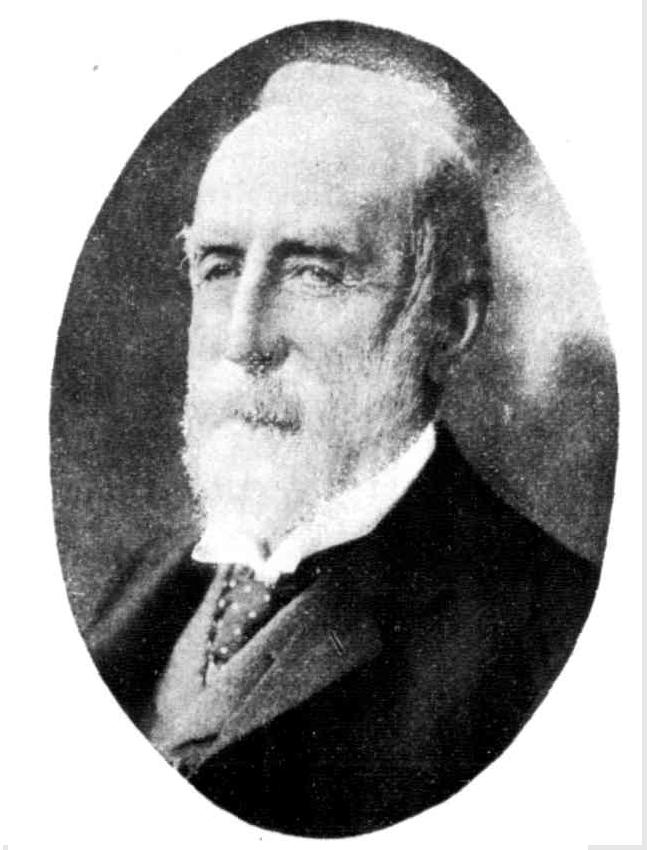
Photo, by Newman. LATE HON. J. T. TOOHEY, M.L.C.
THE HON. JOHN TOOHEY.
HIS DEATH WHILE TRAVELLING. SYDNEY LOSES A WORTHY CITIZEN.
By the death of the Hon. John Thomas Toohey., K.C.S.G., M.L.C.. which is reported to have occurred in Chicago (U.S.A.) on Tuesday in last week., the Catholic Church has lost a most devoted son, New South Wales a worthy Senator and citizen, Sydney society a most amiable member, and the poor a sterling friend. In commerce the community to which he belonged has yielded no more signal example of energy, enterprize, probity, and success than in the person of the gentleman whose demise it so sincerely deplores. And to the last day of his 33 years of opulent activity in Sydney he was in every respect the same unpretentious John Toohey that he was when we first made his acquaintance. He was one ' of those whom success cannot spoil ; and he will be remembered for many evidences of this by old acquaintances upon whom in later years Fortune had forgotten how to smile. The eldest son of the late Matthew Toohey, John Thomas Toohey was 'born at Limerick, Ireland, in 1837, and was brought to Australia 'by his parents when he was but a year old. A sound education, with that robust mental training which came from intellectual parents, prepared the naturally resolute will of the youth to face the world without flinching or faltering.
Young John Toohey is said to have declared in Victoria at a very early age that he intended to work for no employer. He essayed the realization of his desire in Victoria, New Zealand and Queensland with varying success, but undaunted purpose. In 1870 he, with his brother, the late Mr. James M. Toohey, established the business known since then as the Standard Brewery. Success was with this undertaking from the first. Mr. Toohey and his brother, the big-hearted 'Jim' (who by a strange coincidence also died while travelling abroad), immediately identified themselves with the social as well as the commercial life of the city with which they had thrown in their lot, and at once attained a popularity as genuine citizens which they never forfeited. Up to last year Mr. Toohey devoted considerable energy to the development of the business. It was then formed into a limited liability company, with Mr. Toohey as chairman. But this devotion to business never stood in the way of compliance with the demands of public, social, or religious duty. From an early period of their residence in Sydney the brothers took a keen interest in the politics of the State; both helped and encouraged the growth of a protectionist policy ; both offered their services in Parliament ; and although John Toohey was unsuccessful in trying to win Monaro to this view, his brother represented Belmore for a number of years.
The gentleman whose death we now deplore never flagged in his belief in protection as making for the prosperity of the country, and it was in furtherance of that policy that he projected the establishment of the 'Australian Star,' on the directory of which he continued till the end. In 1892, in recognition of the prominent and intelligent interest he had taken in the welfare of the State, Mr. Toohey was appointed to the Legislative Council. With his liberal Australian training, Mr. Toohey might in the ordinary course have been expected to favour Irish autonomy. As a matter of fact, although an Australian of the Australians, he was an ardent lover of the land of his forefathers, a close student of its history, ancient and contemporary; and its struggles for justice always appealed in him to a sterling Irish Nationalist. With every movement having for its objective the advancement of Irish Nationality he had for the past 33 years been prominently associated. He was one of the local officials of the Irish Famine Relief Fund of 1879-1880. by which £30,000 was raised in New South Wales for the suffering Irish peasants. He was associated with the organizations which crowned with success the respective Home Rule visits of Messrs. John and William Redmond, of Mr. John Dillon, Sir Thomas Grattan Esmonde, Mr. Edward Blake, and Mr. Michael Davitt ; and at the time of his death he was one of the honorary treasurers of the Homo Rule organization which was formed at the Sydney Town Hall in July last. Mr. Toohey also prominently identified himself with the movement to commemorate the heroes of '98. To aTl these movements he was a liberal subscriber in cash as well as sympathy ; and no St. Patrick's Day celebration committee in Sydney was complete without his co-operation. Nor to his Church was John Toohey a whit less loyal than to the countries of his birth and his adoption. What movement during the past generation for the promotion of Catholic and charitable objects were without his generous and active co-operation ? He was associated with the rebuilding of St. Mary's Cathedral during the time of Archbishop Vaughan with its opening in 1882; and in the following year was a fellow-passenger of Dr. Vaughan on the voyage from which that prelate never returned. Mr. Toohey was on the committee which gave such enthusiastic welcome to Cardinal Moran on his arrival in this country; and since then has never failed to be at the right hand of his Eminence in any work for the promotion of religion and charity. Some nine years ago, on the recommendation of the Cardinal, Mr. Toohey was invested by tin* Sovereign Pontiff with the detrition of Knight Commander of St Gregory the Great and with the insignia of the Order he took his seat at many an important function in St. Mary's Cathedral, the last 'Teat gathering in which he took part in that stately pile being the Australasian Catholic Congress of 1900. Almost the last occasion on which Mr. Toohey appeared in public was at the opening of the bazaar in aid of the Pymble Convent last October, when he seconded Monsignor O'Brien's remarks on the necessity of religious education for the young. Apart from the general mass of his charity, private and public, Mr. Toohey was a munificent benefactor of the Little Sisters of the Poor, Randwick; the Magdalen Refuge (Sisters of the Good Samaritan), Tempe ; the Women's Hospital (Nursing Sisters of the Little Company of Mary), Lewisham ; the Home for Destitute Boys, Westmead; and the Waitara Foundling Hospital. A keen commercial man, Mr. Toohey, has a large fixed deposit in what Bishop Torreggiani calls 'the Bank of Providence.' Mr. Toohey was twice married — first to Miss Doheney (sister to Mrs. John Baxter and Mrs. J. G. O'Ryan).. He is survived 'by his second wife (who is the sister of the Very Rev Dr. Egan. O.S.B., of Ponsonby, diocese of Auckland). His sister (Mrs. Gunning) also survives him. By his first marriage there were two sons and three daughters, .and of these all survive but the eldest son (Matthew), who died eight years ago. Mr. and Mrs. Toohey had established a palatial home at Wahroonga, and for years past 'Innisfail' has been a centre not only of hospitality, but of charitable works. During the Congress celebrations in 1900 one of the most prominent and brilliant entertainments was the garden party given by Mr. and Mrs. Toohey at 'Innisfail' in honour of the visiting prelates. Earlier, the '98 delegates from Melbourne and
THE LATE HON. J. T. TOOHEY, K.C.S.G., M.L.C.
prominent Sydney officials were entertained. Here, too, the deceased gentleman spent most of his time of late, impaired health adding to a natural distaste for society apart from his own Home. In October last, having shaken off much of the tyranny of business by the formation of his company, Mr. and Mrs. Toohey and the Misses Madeline, Eileen, and Josie Toohey, set forth upon a prolonged tour in Europe and America. It was not, however, on the advice of his medical attendant (Dr. C. W. MacCarthy) as has been stated elsewhere, that the tour was undertaken. It was thought by his family that the sea trip would benefit him, and as two of his daughters were proceeding to England to reside for a couple of years, he thought they might all make the journey together. The last two mails brought letters, which, in some slight way, prepared his relatives' for this sad news. Mrs. Toohey and her daughters understood from the London doctors how hopeless Mr. Toohey's case was, but the last news by mail from Bournemouth staged their intention of returning via America as the easiest way home : for Mr. Toohey's one longing was to reach Australia. On receipt of this disquieting news Mr. J. Maurice Toohey (the only surviving son) and Miss Egan (Mrs. Toohey's sister) immediately took passage for America. They left by the Sonoma on Easter Monday, which was due at San Francisco on the 3rd instant ; and it is just possible that good John Toohey breathed his last surrounded by all his family, though in 'a far foreign land.' May he rest in peace. A cable has been received from the family announcing that the remains will he brought oil I o Sydney by the Sonoma, which left San Francisco on Tuesday last, and should reach Sydney on the 5th or 6th of June. It also announces that Mr. Toohey's last request was that his Requiem should be celebrated in his own little parish church at Pymble. REMEMBRANCES. We have been requested to publish the following 'remembrances' of Mr. Toohey's charity. The Little Sisters of the Poor at Randwick desire to record their deep sympathy with the bereaved family in the loss they have sustained by the death of Mr. Toohey. He was a truly great benefactor to the Home, and in him the aged poor who are under the Sisters' care have lost one who was ever ready by advice and by purse to help over any difficulty that beset the Little Sisters. Indeed, he, together with the late Mr. Thomas Dalton, was the main instrument in the erection of the truly 'beautiful 'Palace of the Poor' overlooking Centennial Park.' 'The committee of the Home for Destitute Boys, Westmead, recognize that the Home has lost a truly generous friend by the death of the Hon. John Toohey, who has for some years past been chairman of the Home trustees—in fact, the existence of the fine new buildings at Westmead is clue largely to Mr. Toohey's generous initiative. At the meeting of the committee, held on Monday last, the matter was referred to in most sympathetic terms, and arrangements were made for the celebration of a Requiem Mass at the 'Home for the repose of the soul of the deceased benefactor. All the boys in the Home will assist at the Mass, and as many members of the committee as can conveniently do so are also invited to attend.' The Home, we need hardly tell 'Freeman' readers, is controlled by the charitable Society of St. Vincent de Paul, of which body Mr. Toohey was a zealous member. THE HON. JOHN TOOHEY. (
1903, May 16).
Freeman's Journal (Sydney, NSW : 1850 - 1932), p. 20. Retrieved from
http://nla.gov.au/nla.news-article108255452 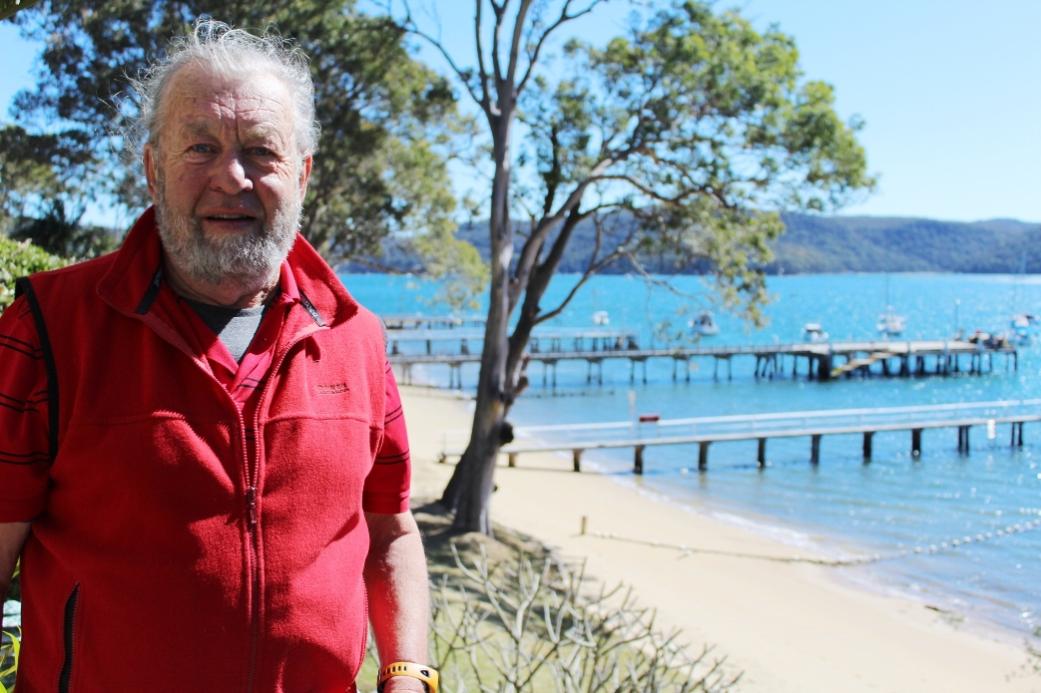
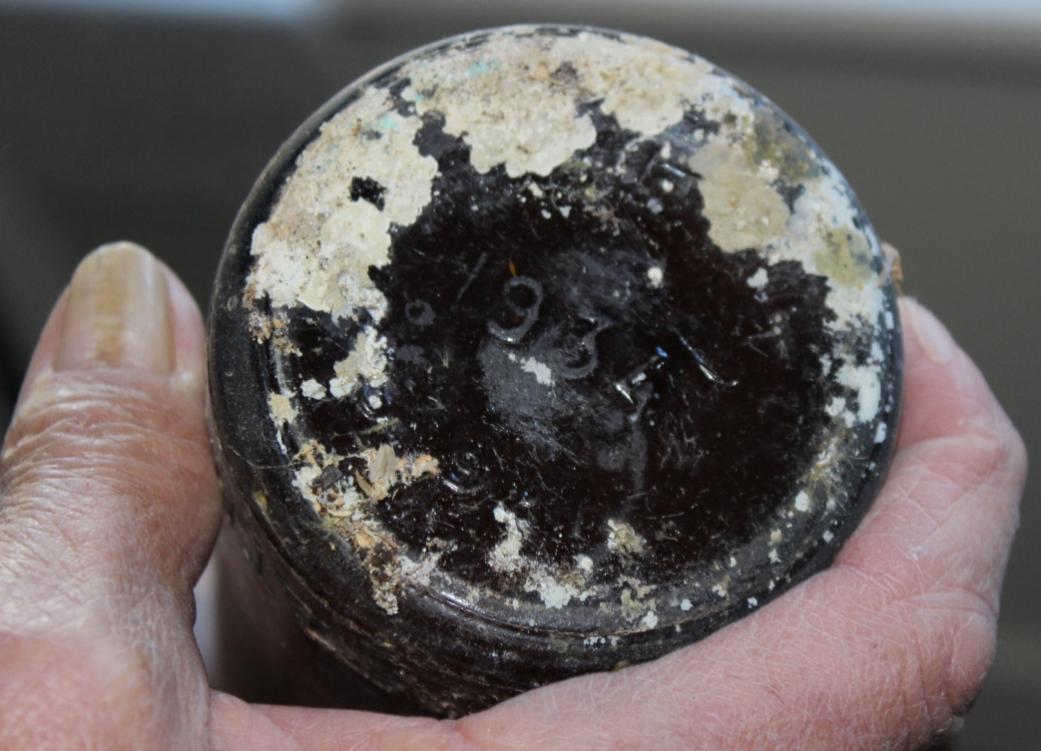
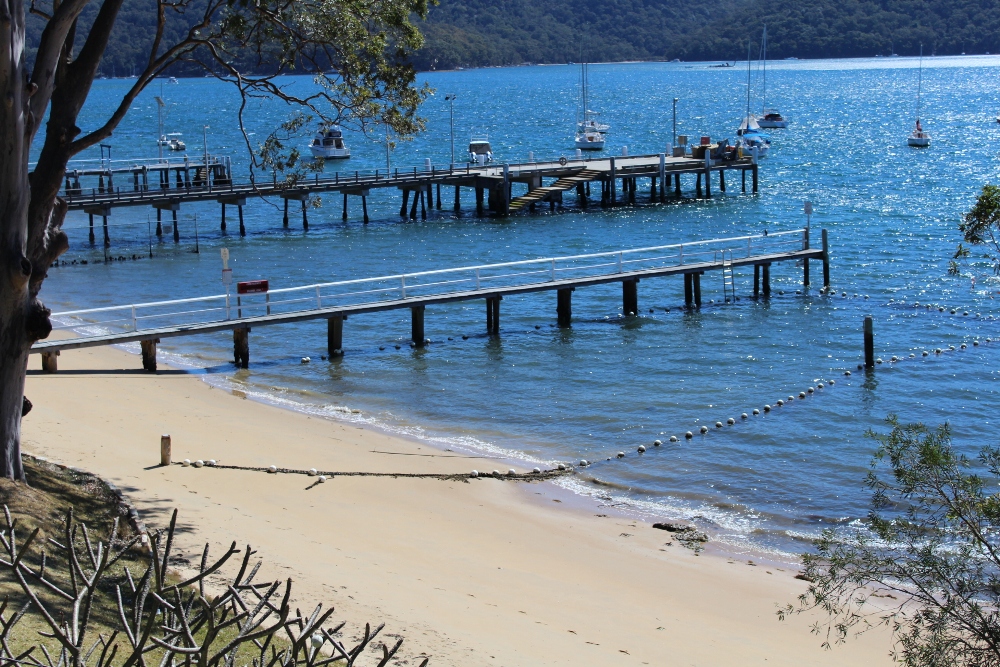
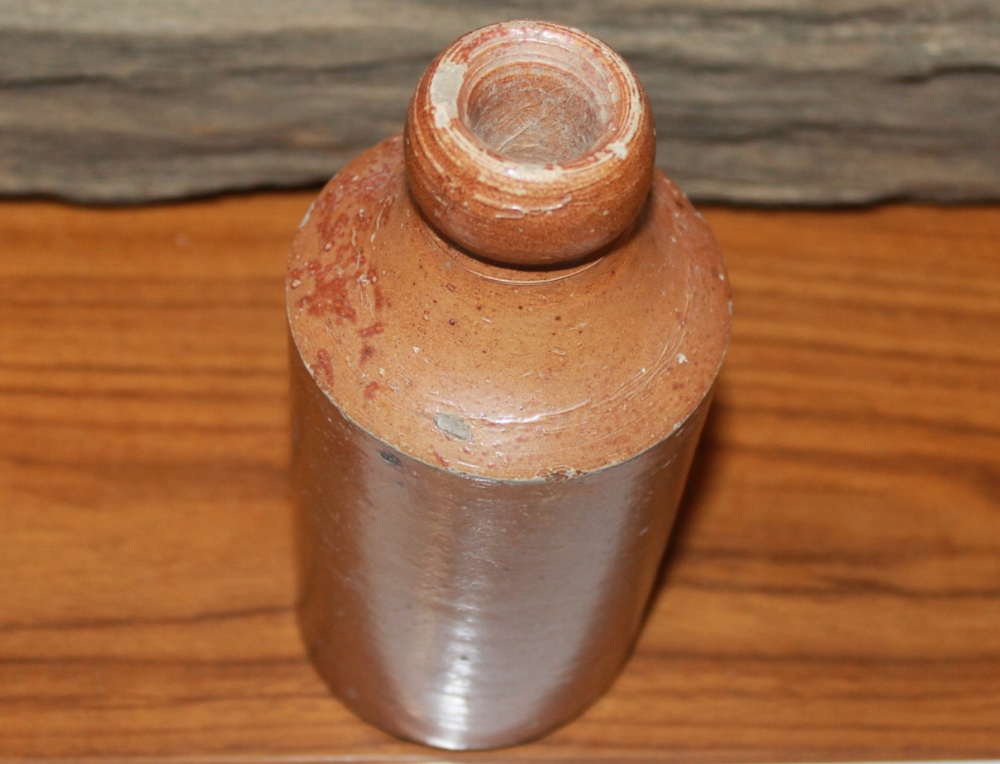
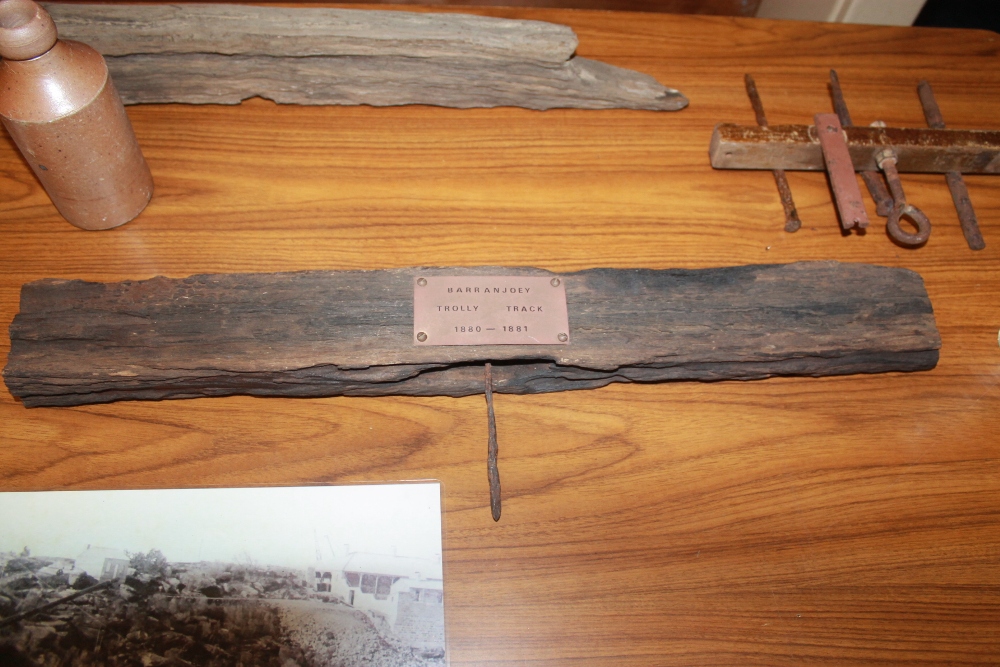
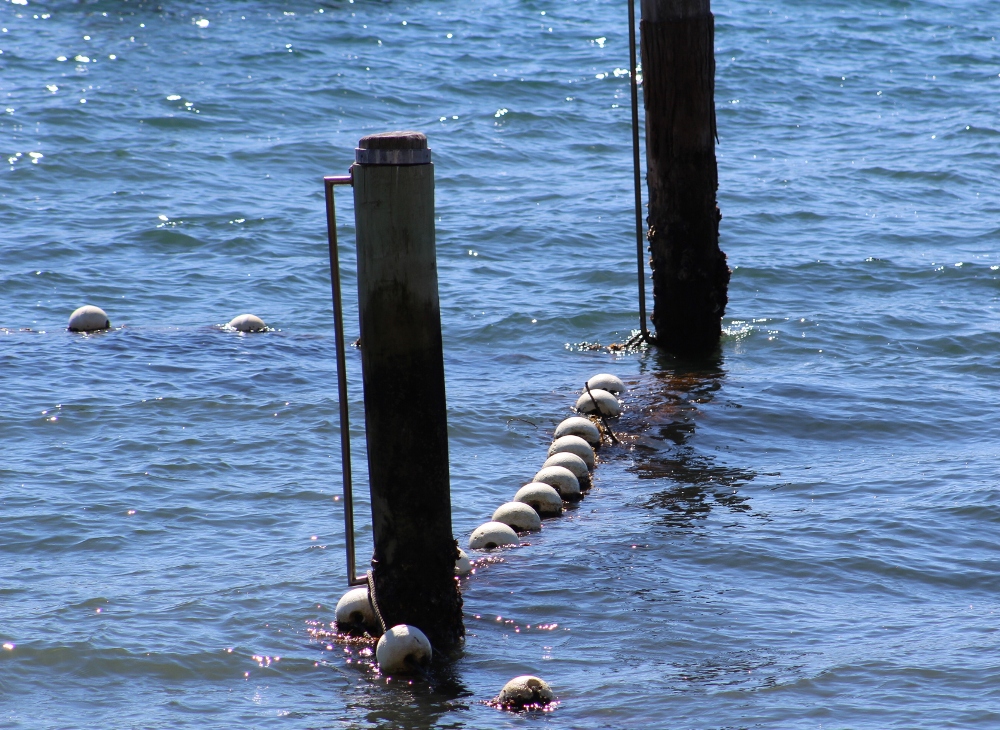
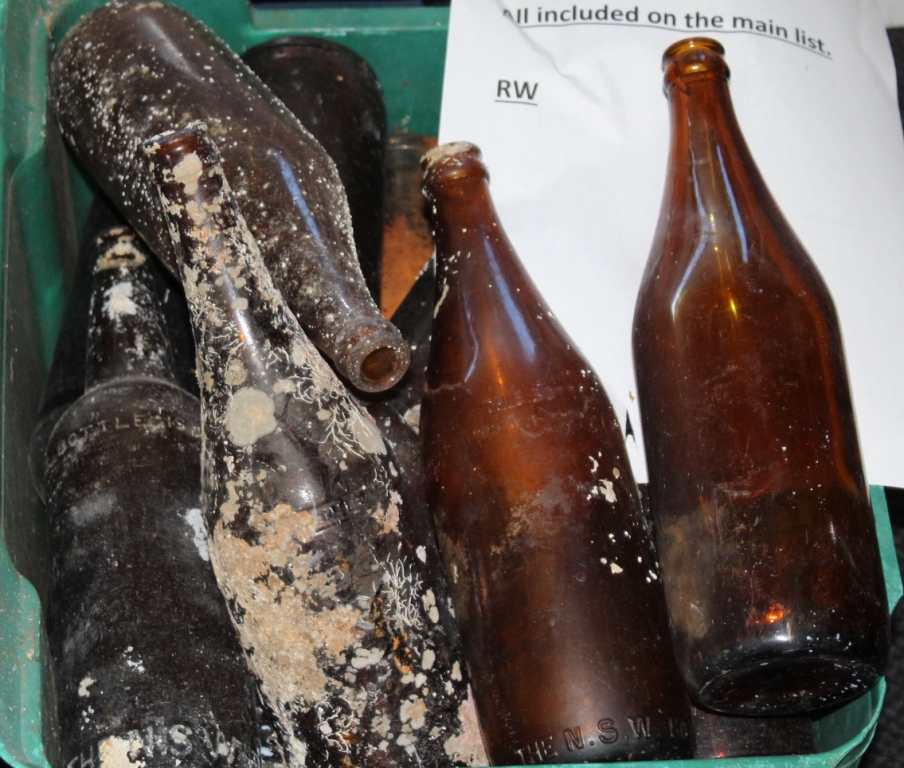
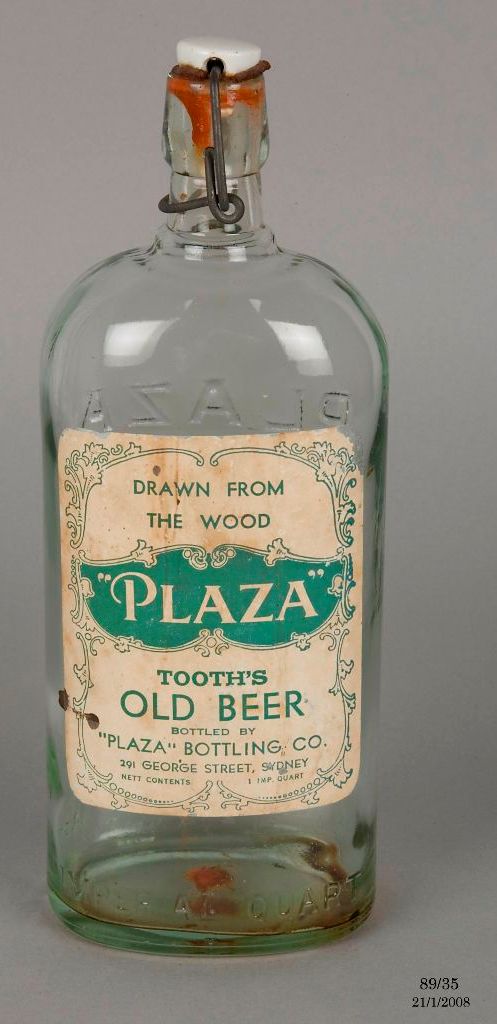
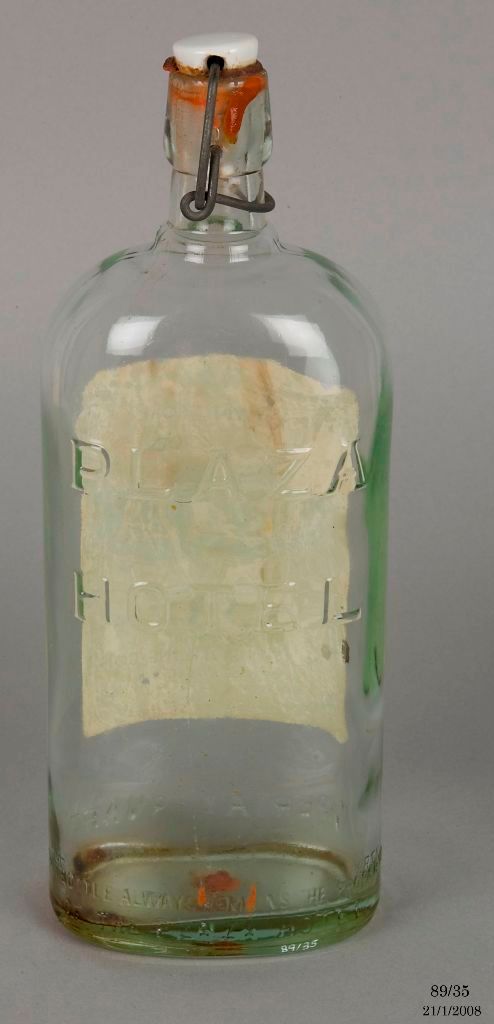
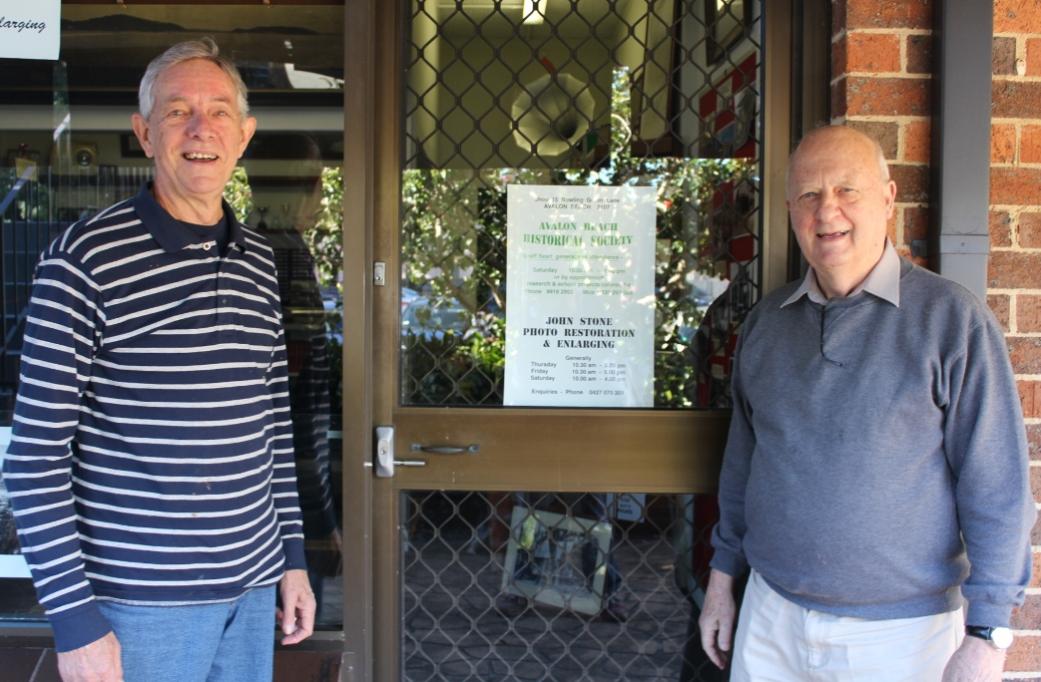
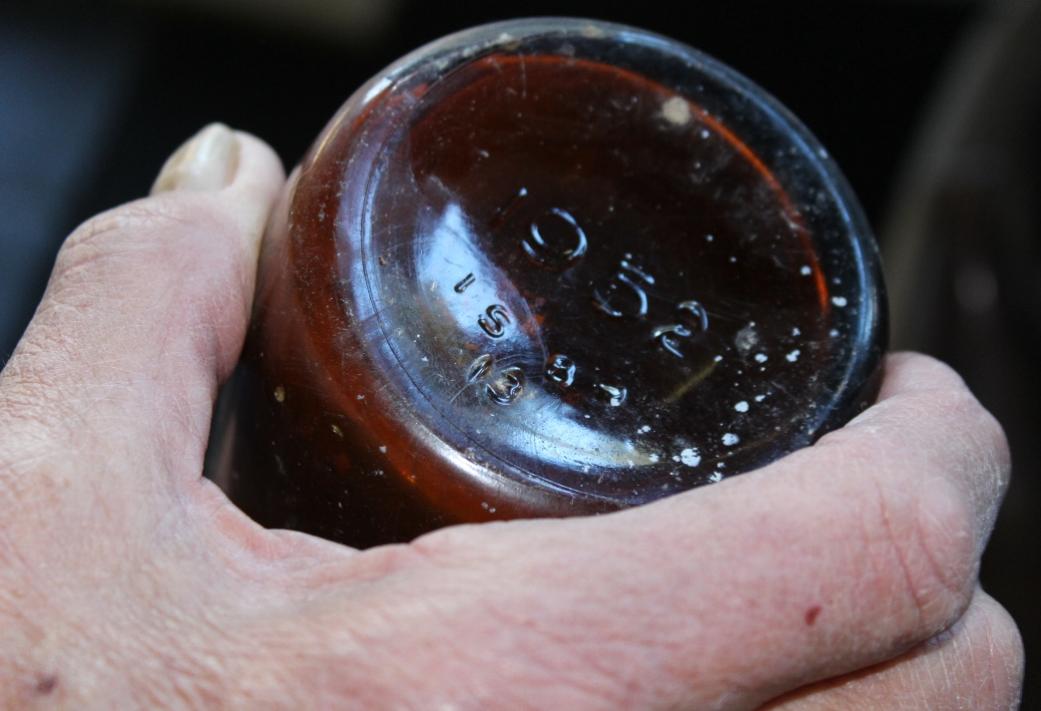
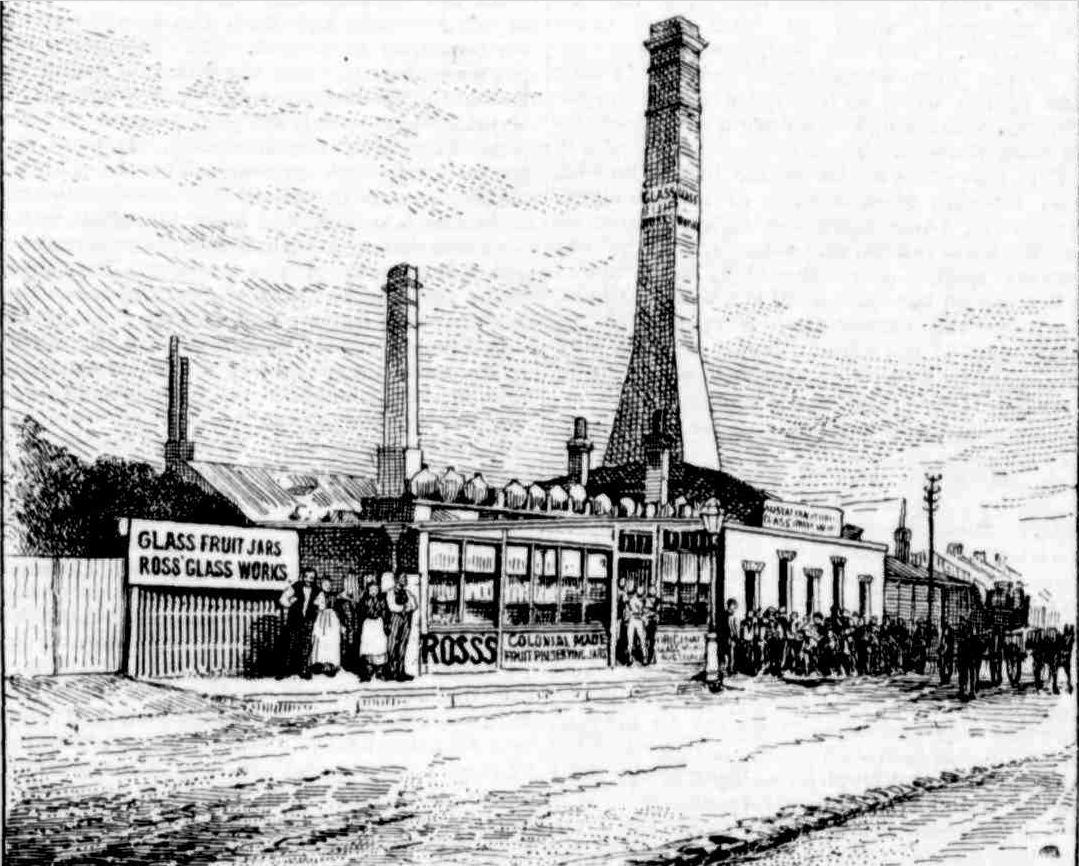



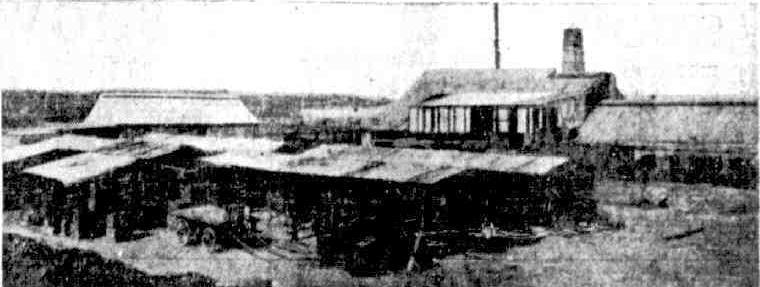
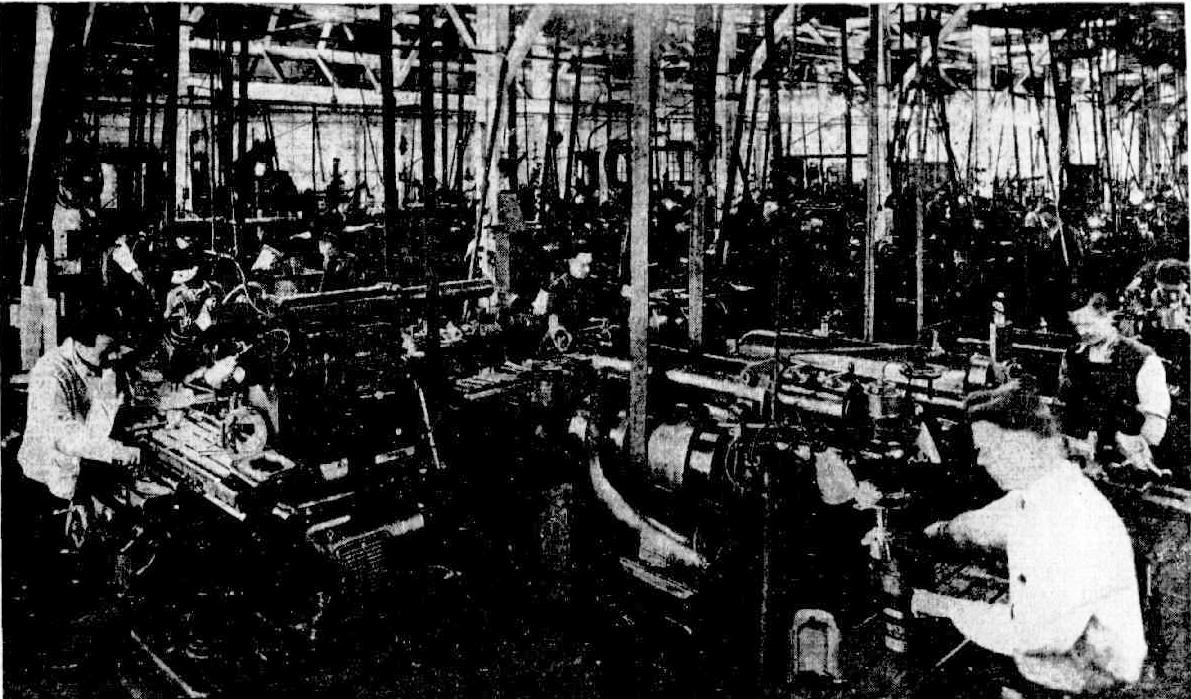
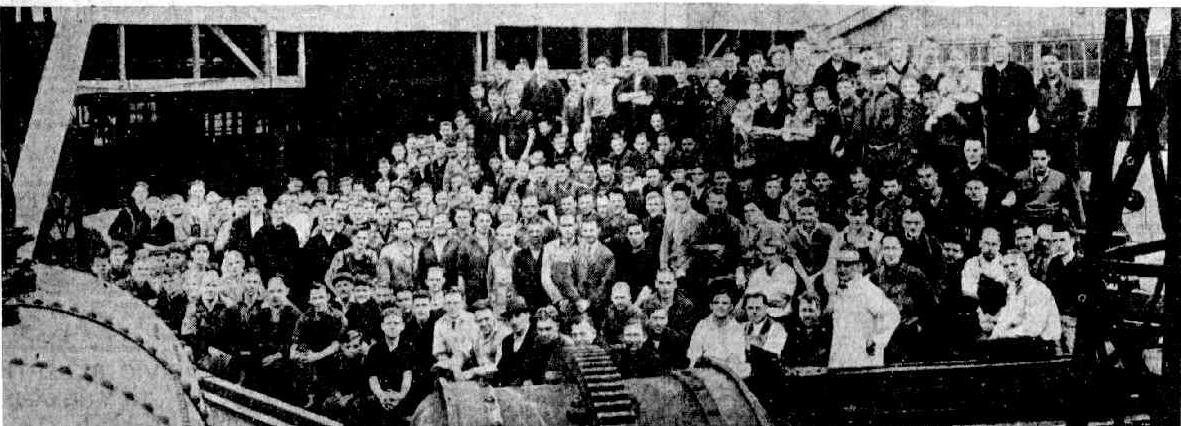
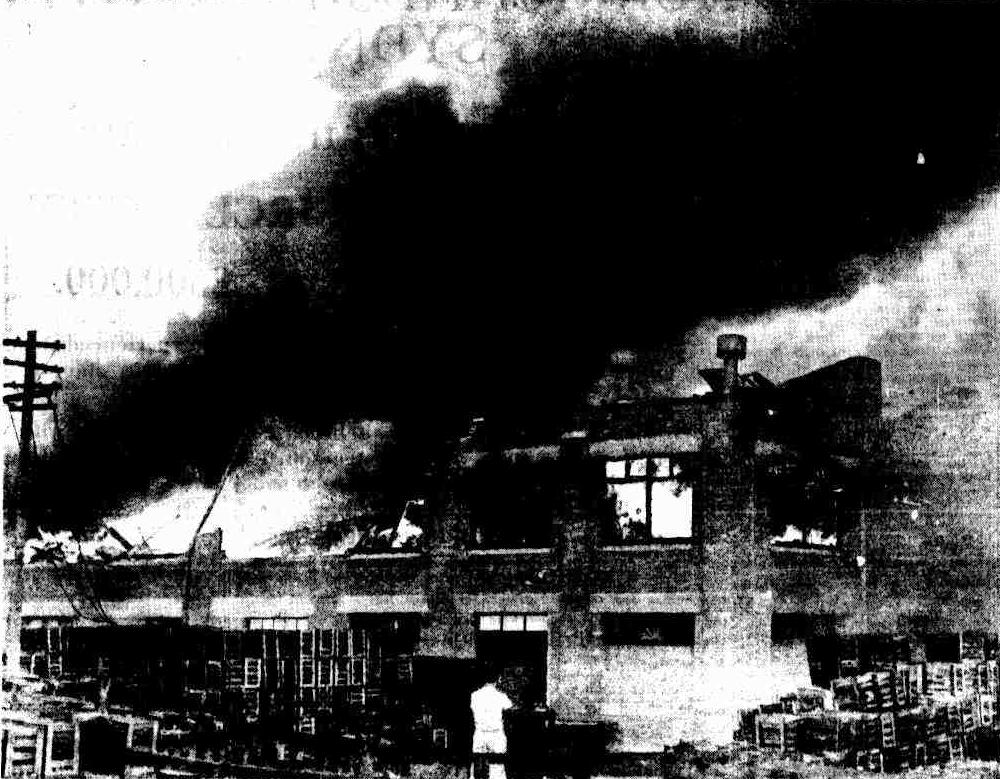





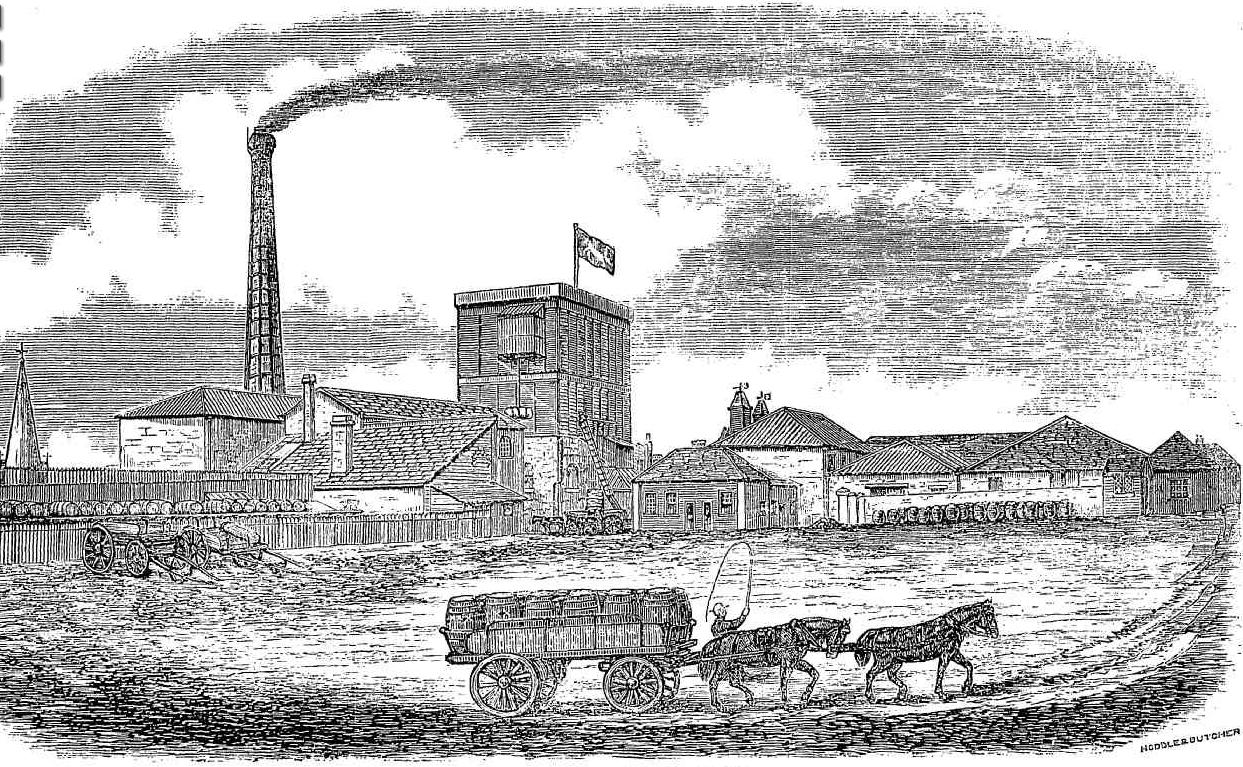
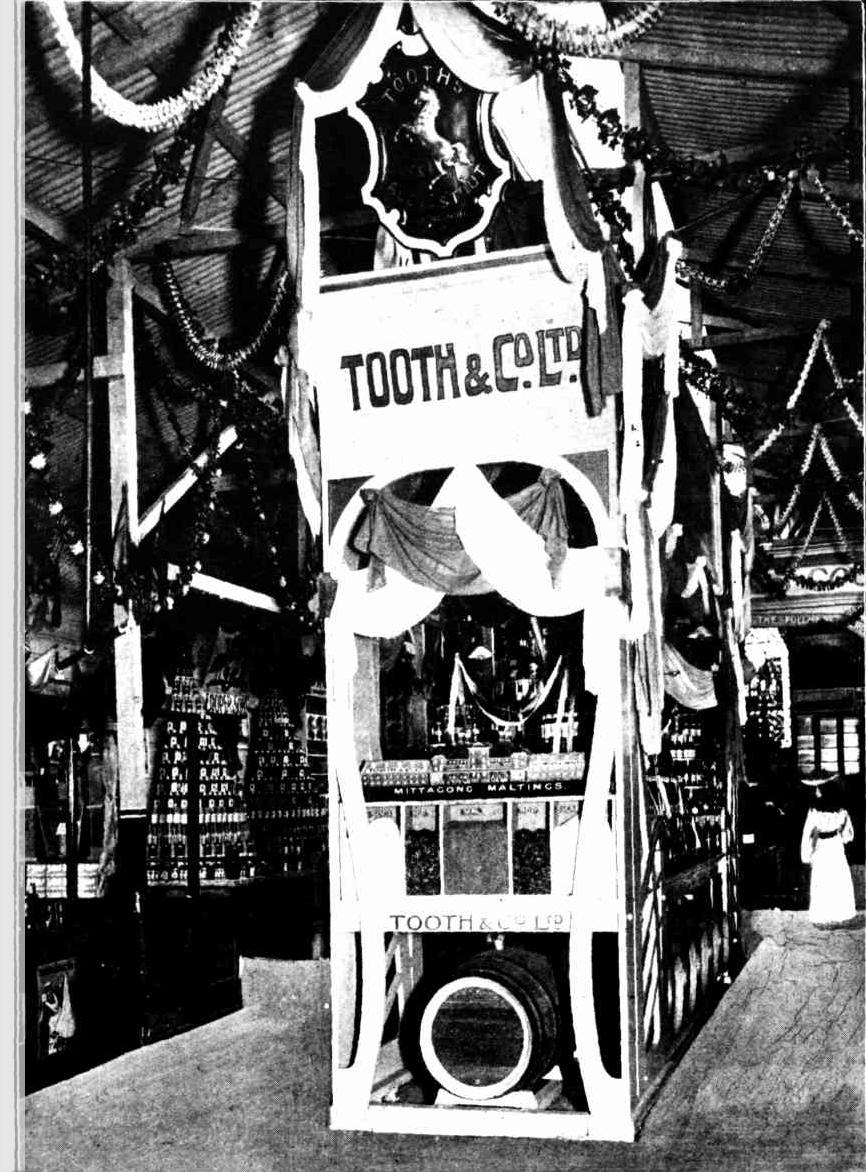
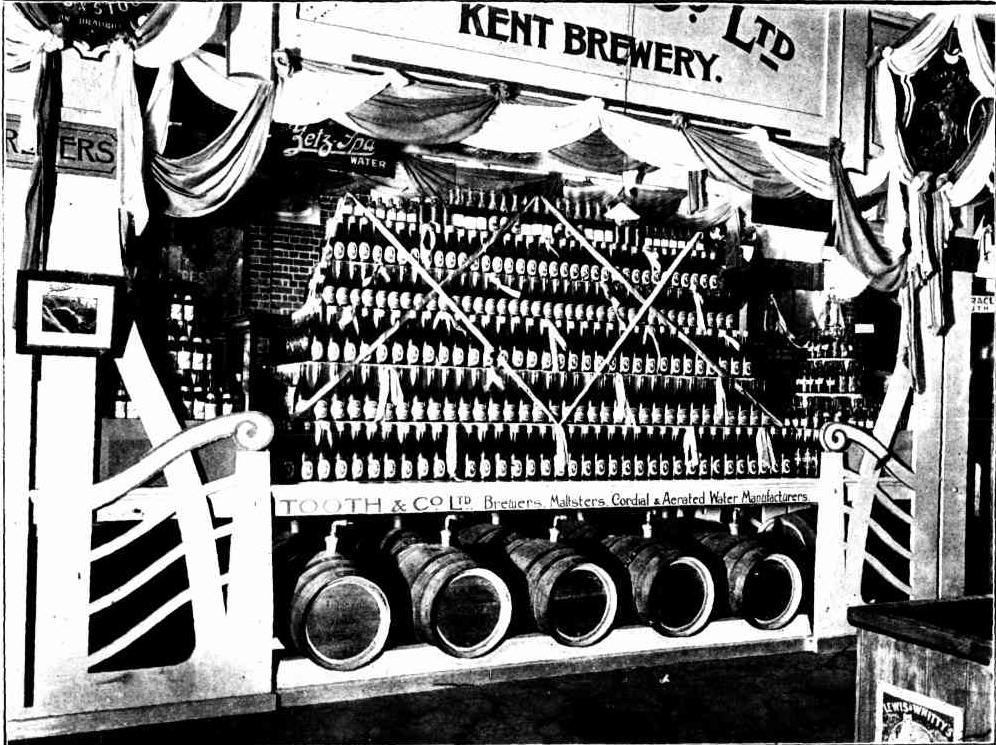
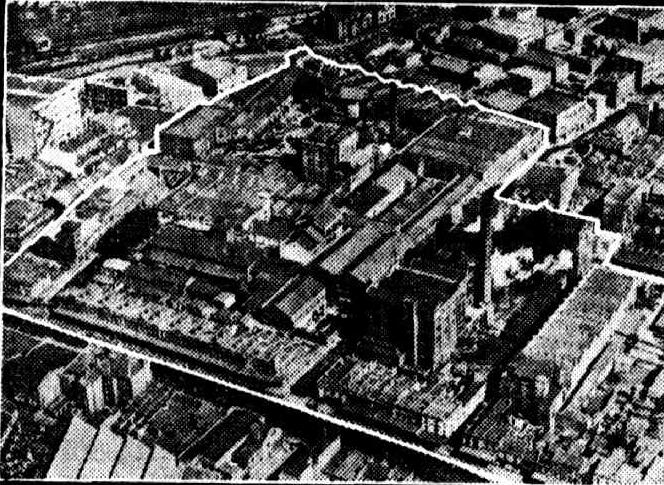
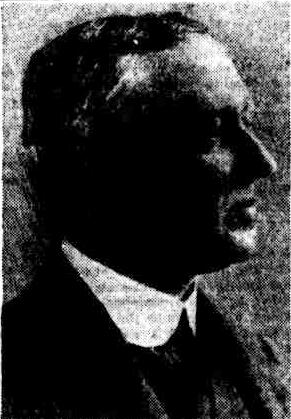 The death occurred on Friday at Molong Hospital, Darlinghurst, of Mr. Arthur William Tooth, who was for many years chief brewer for Tooth and Company, Limited. He was 64 years of age.
The death occurred on Friday at Molong Hospital, Darlinghurst, of Mr. Arthur William Tooth, who was for many years chief brewer for Tooth and Company, Limited. He was 64 years of age.